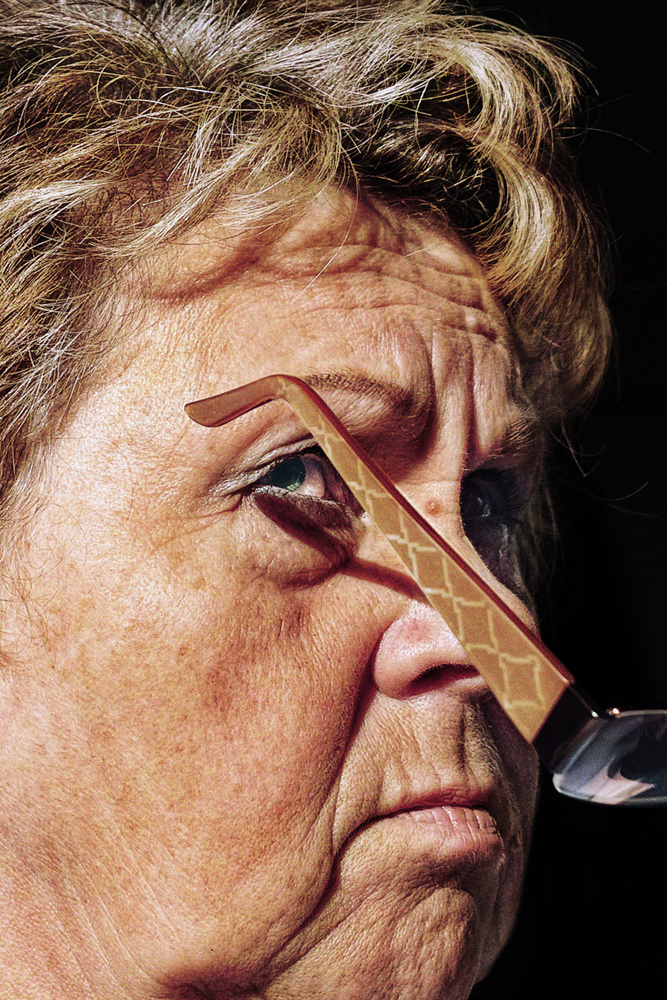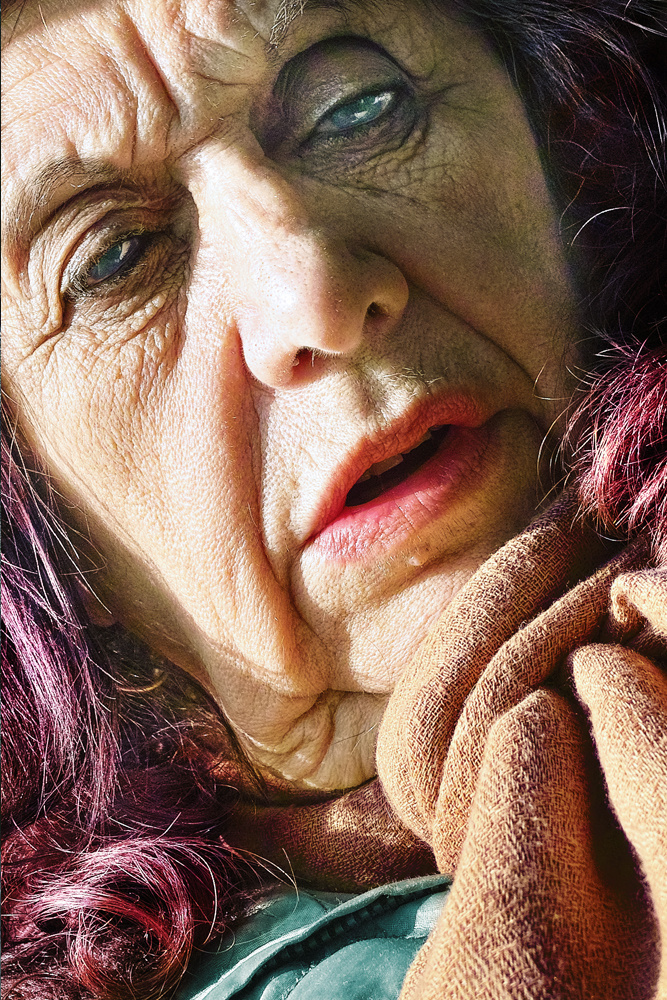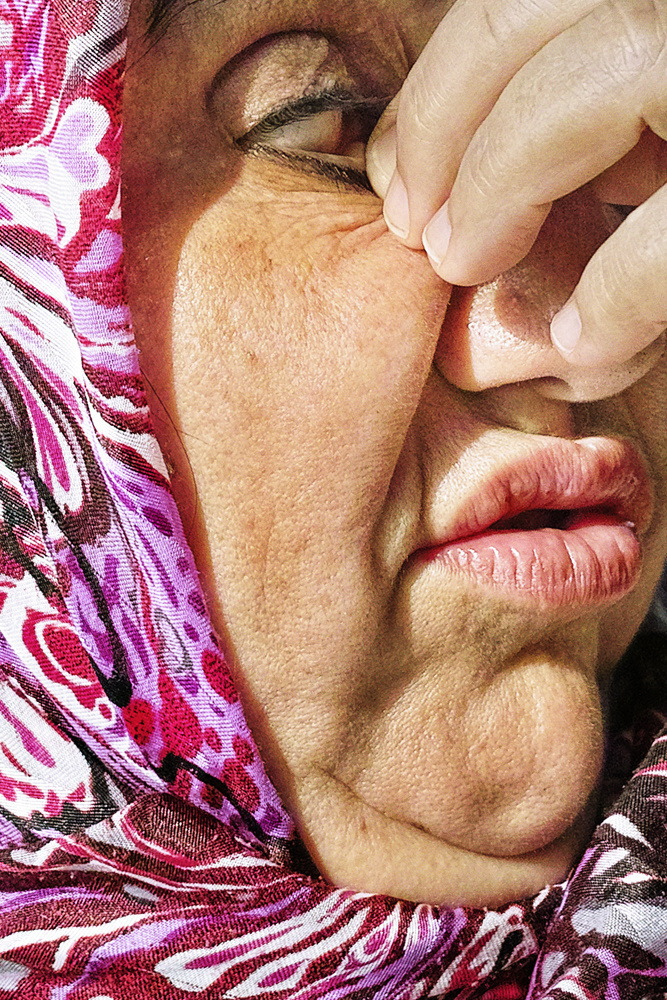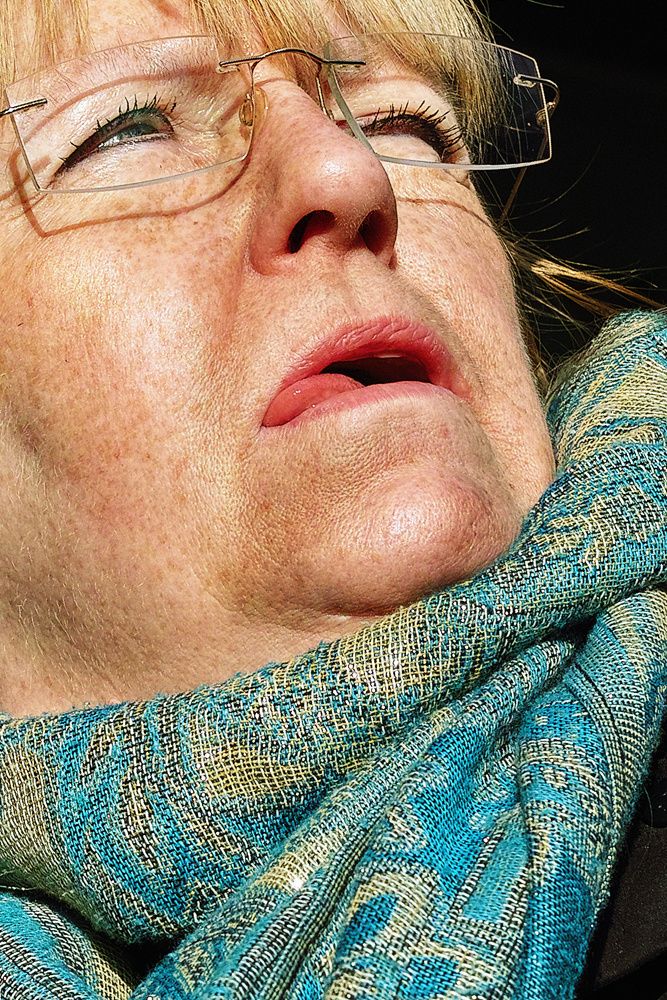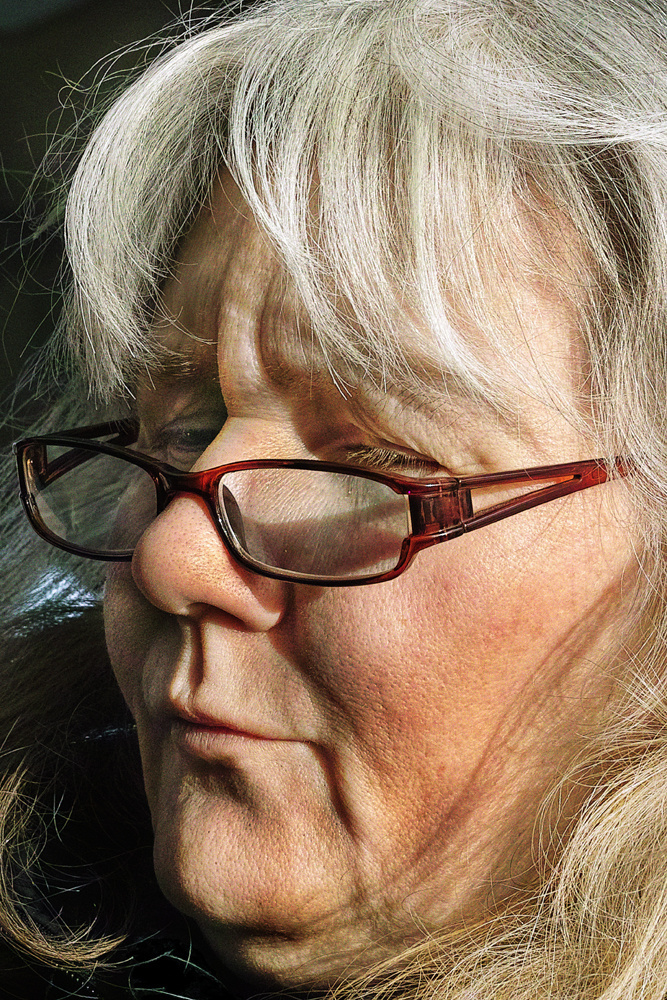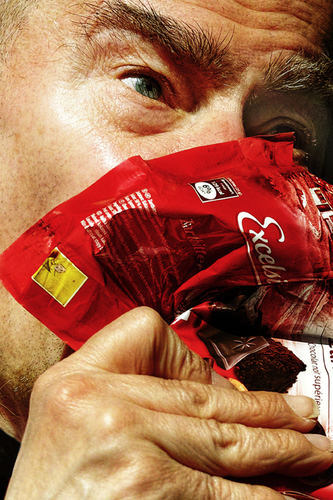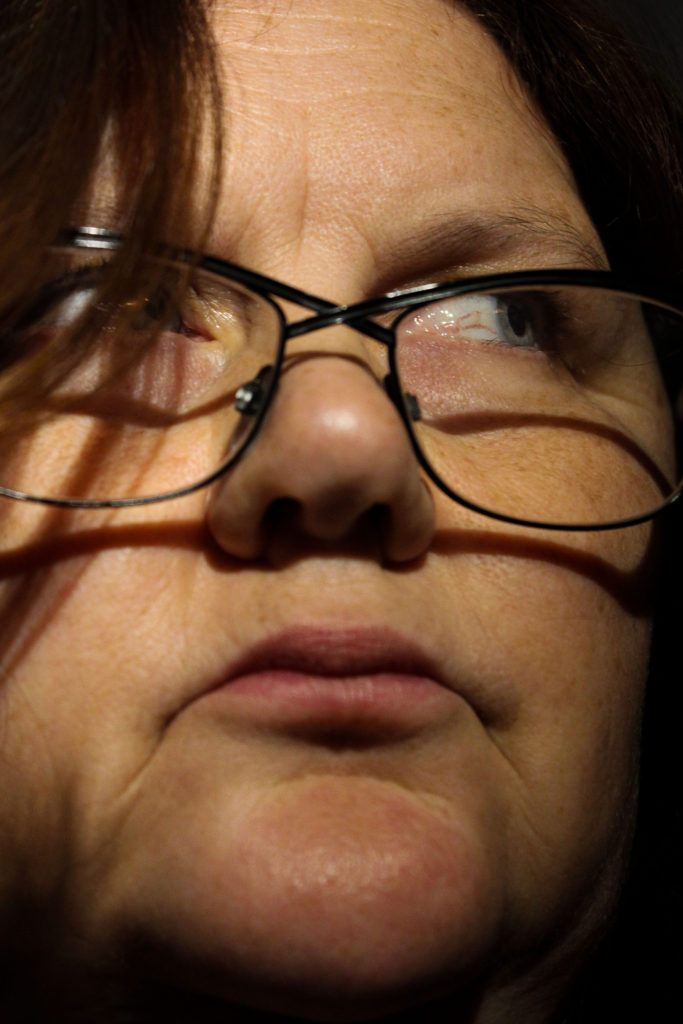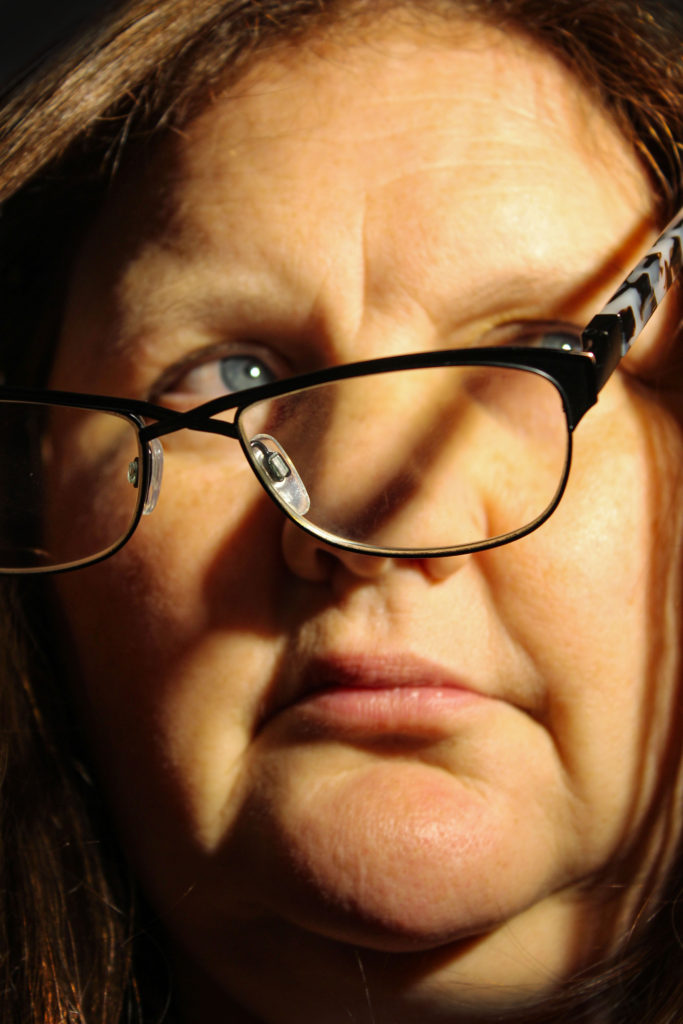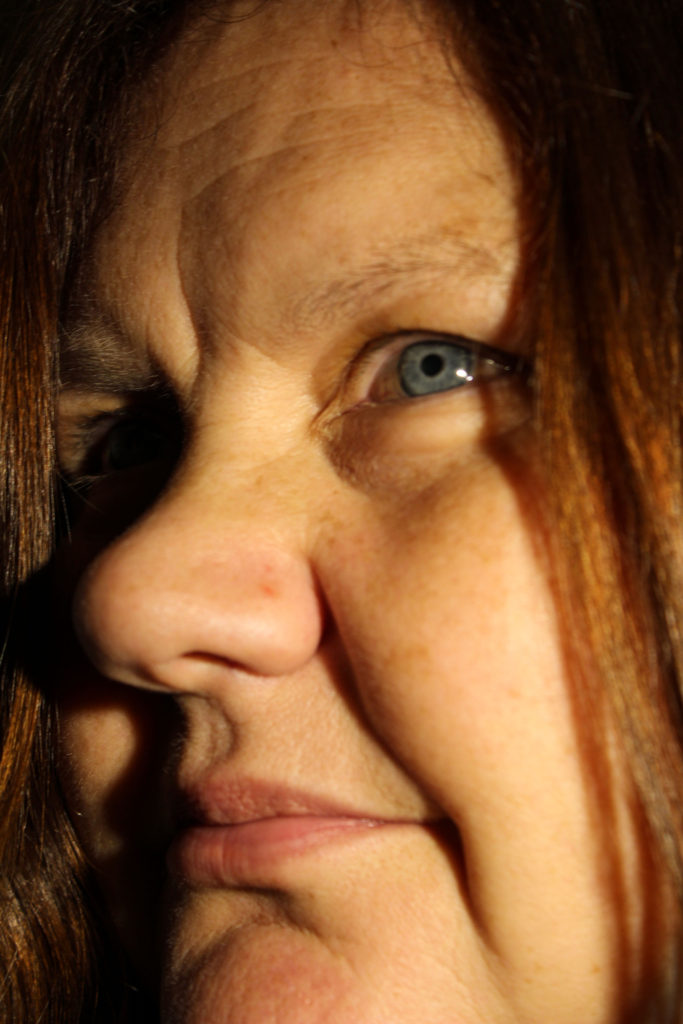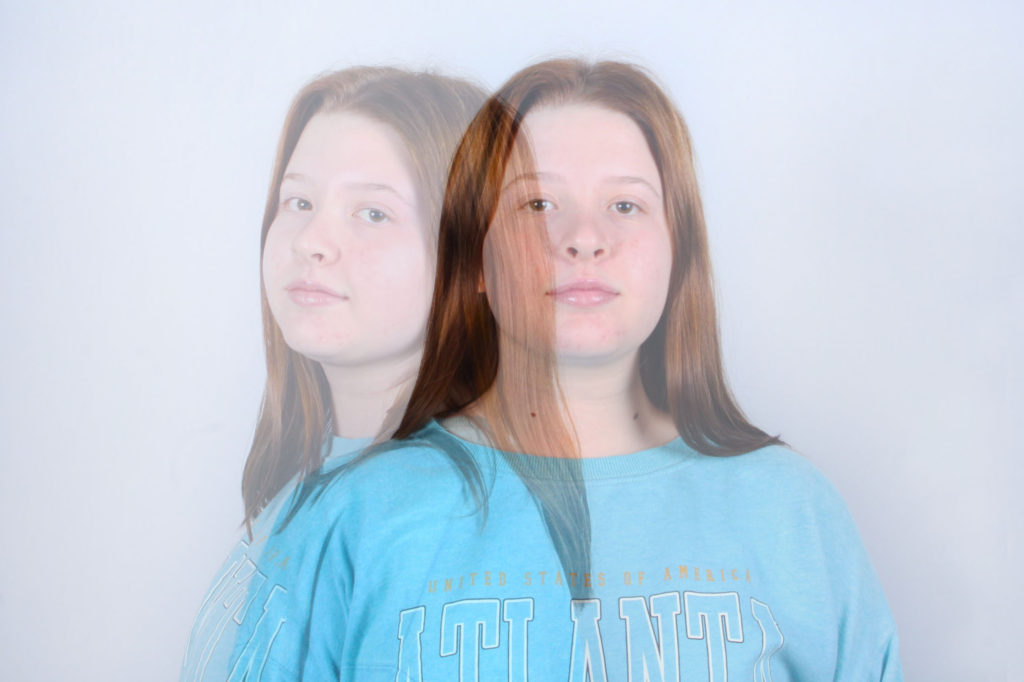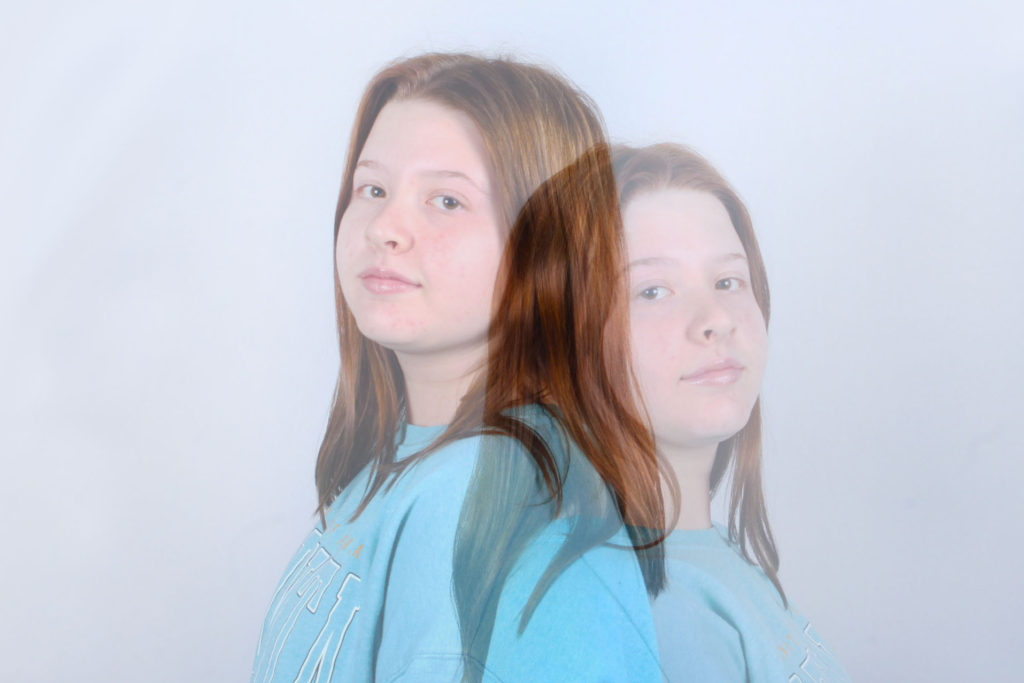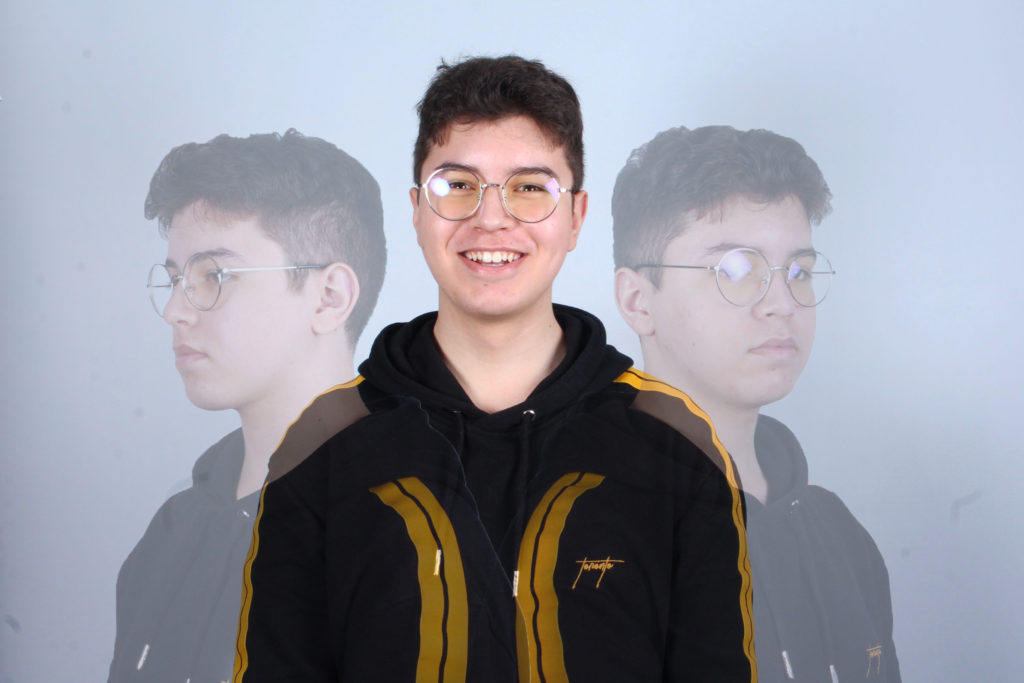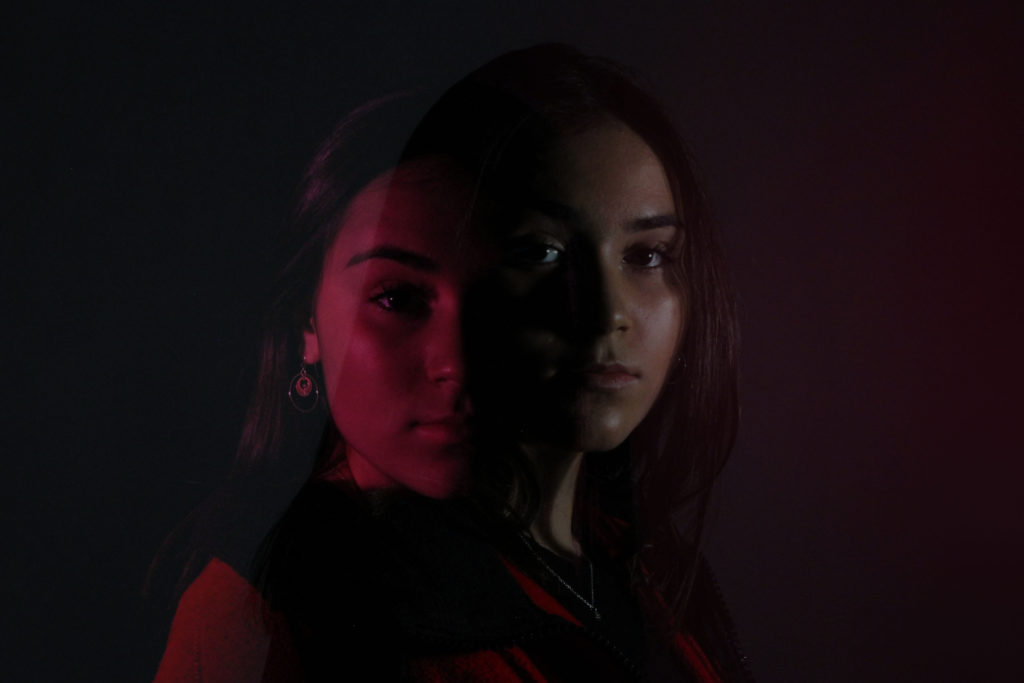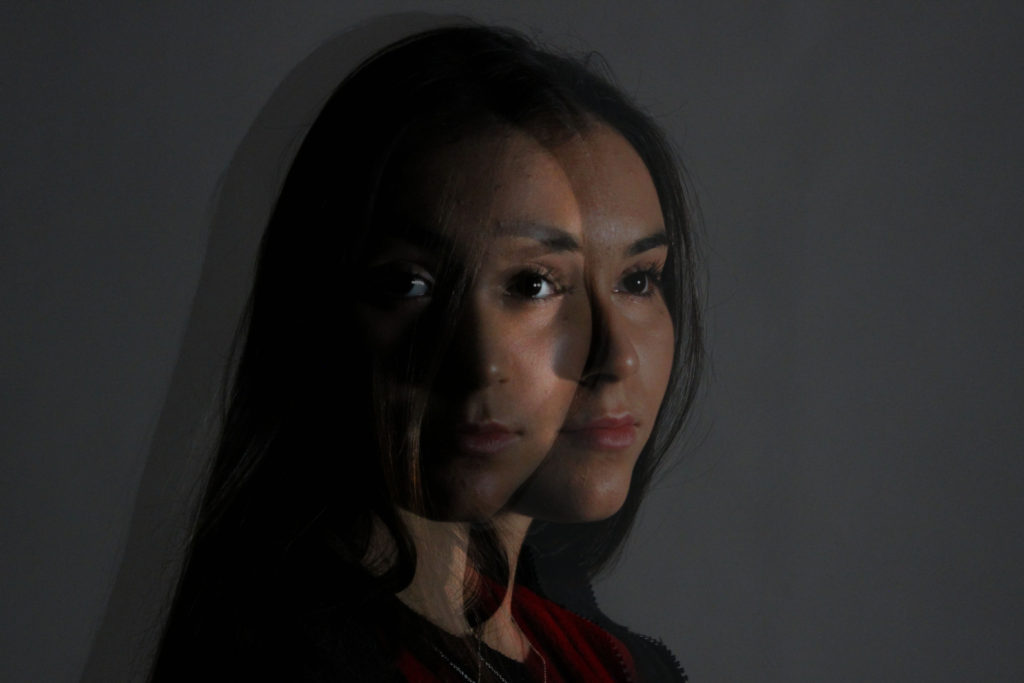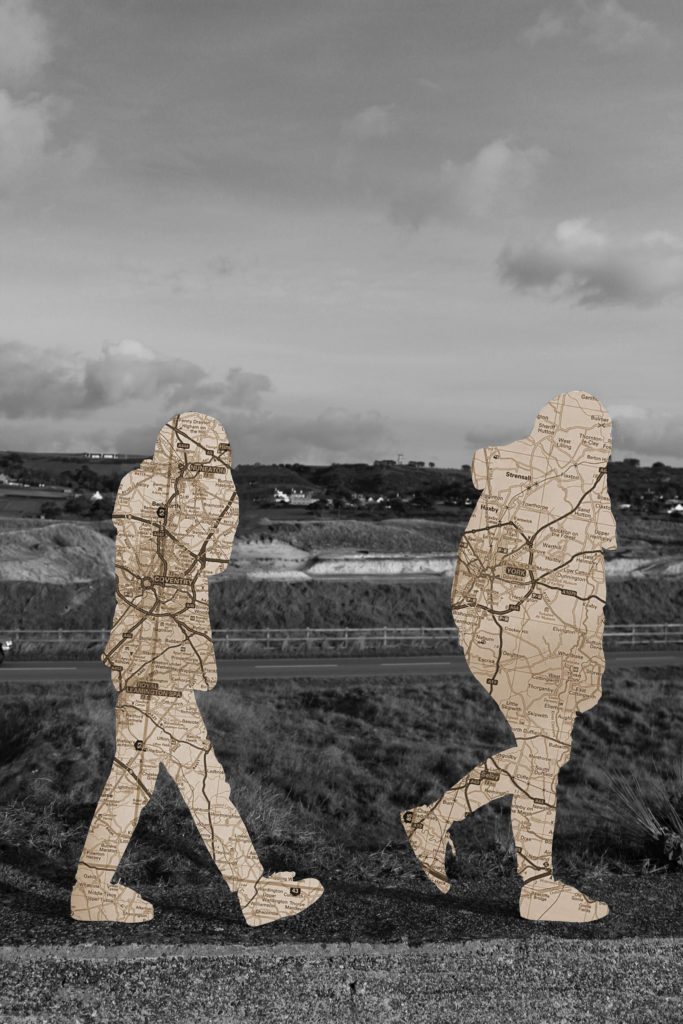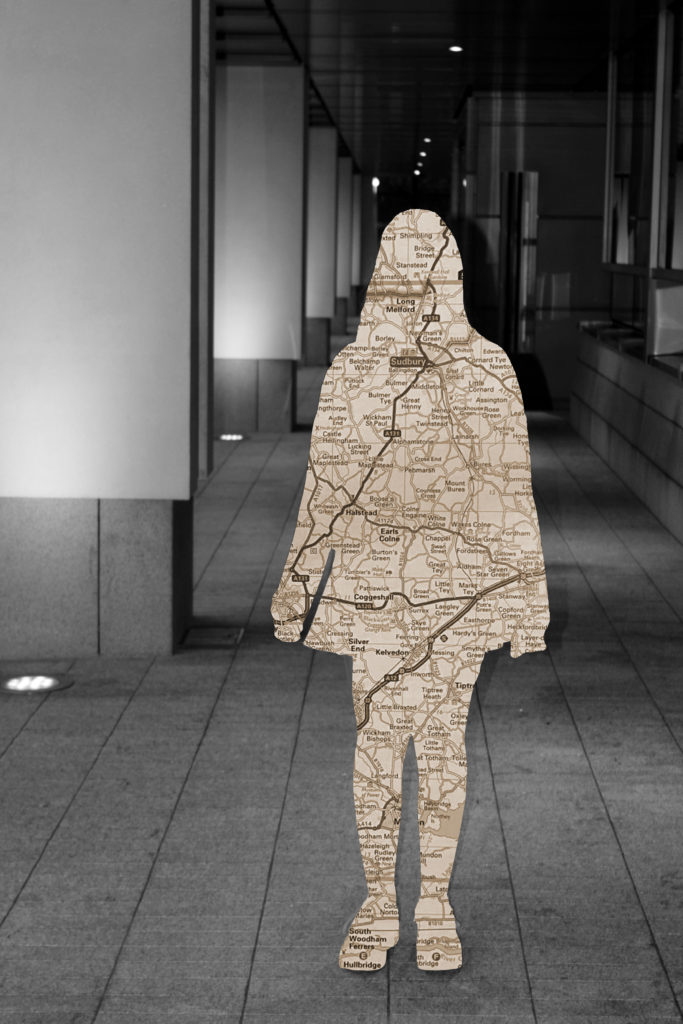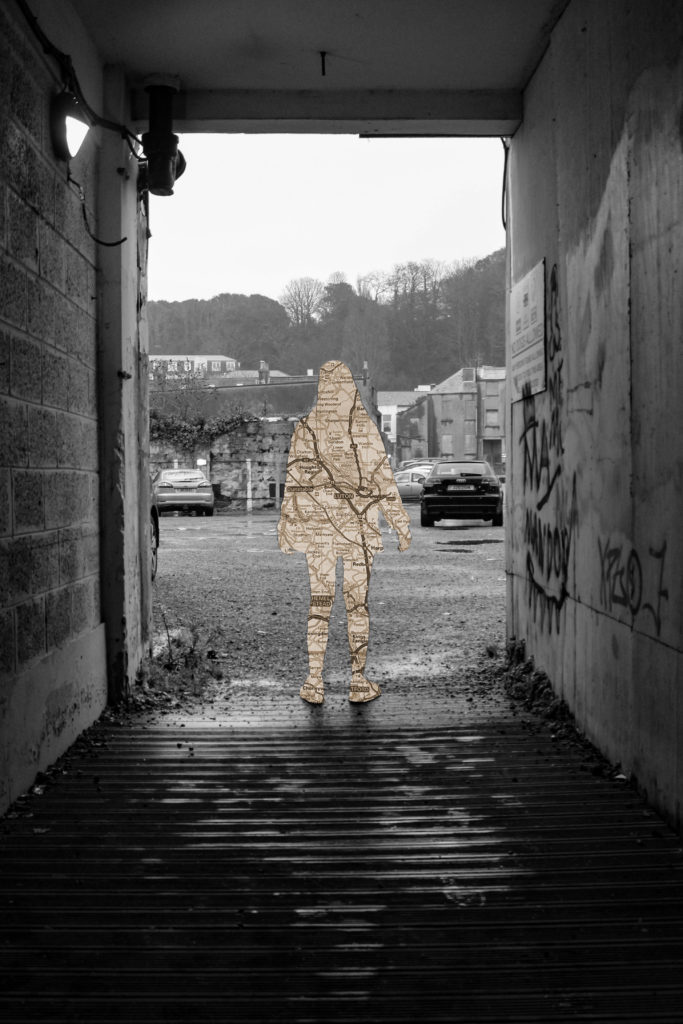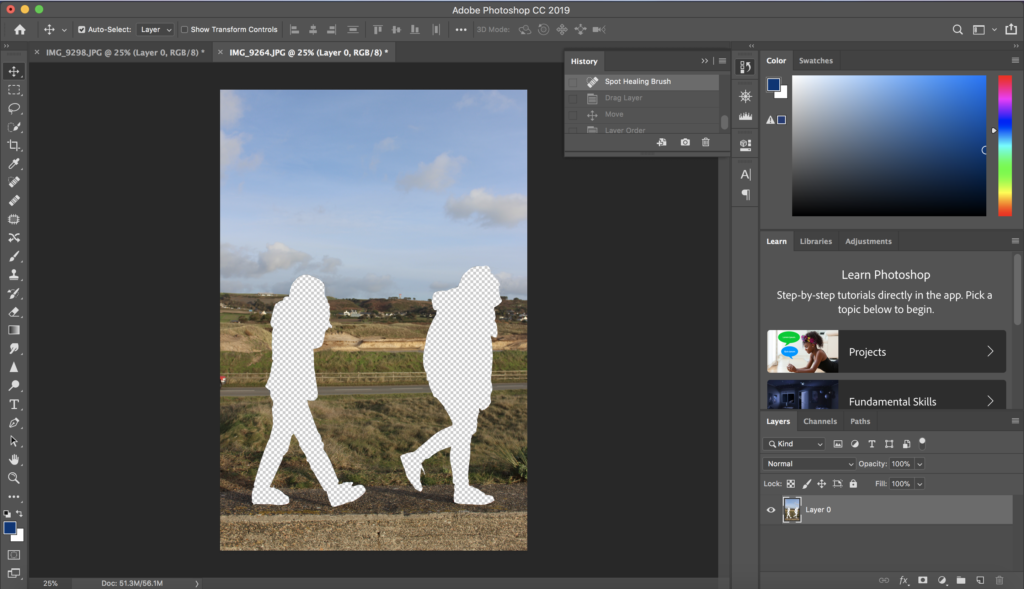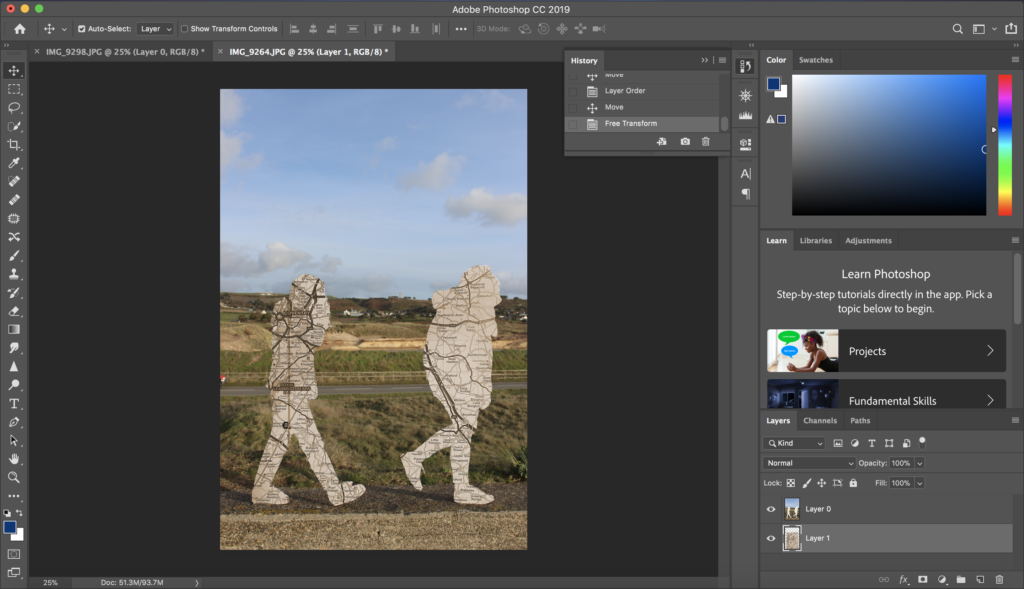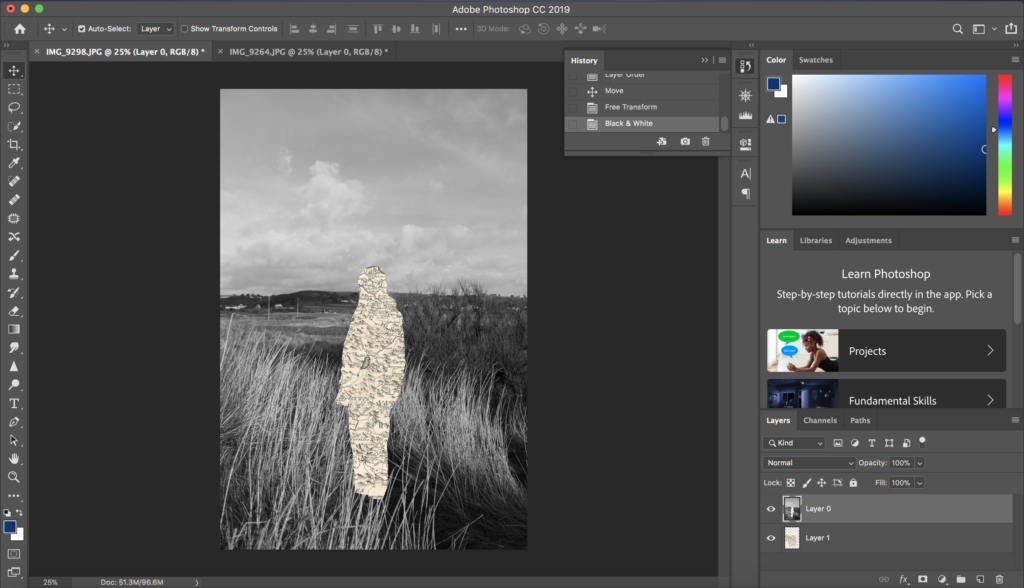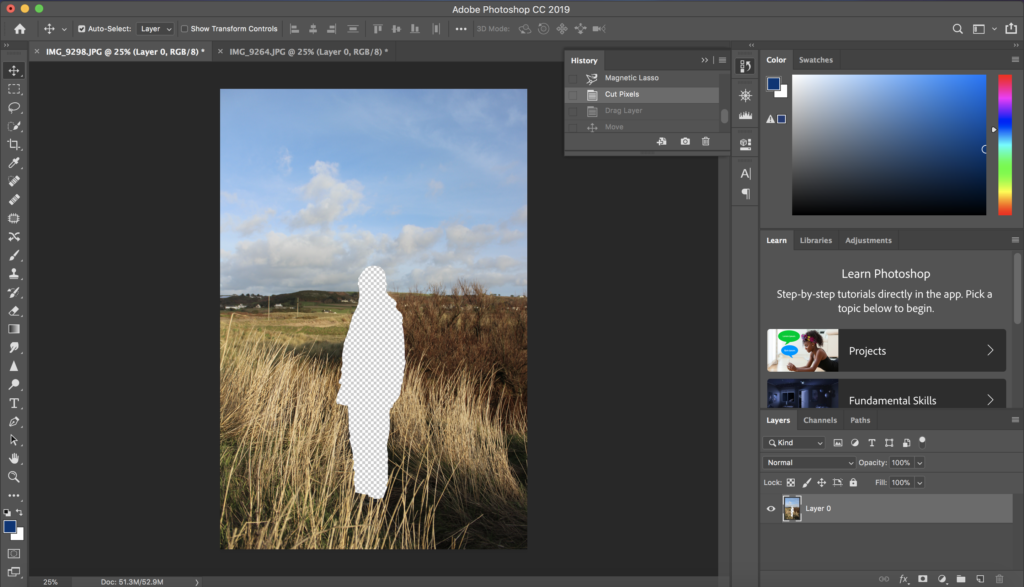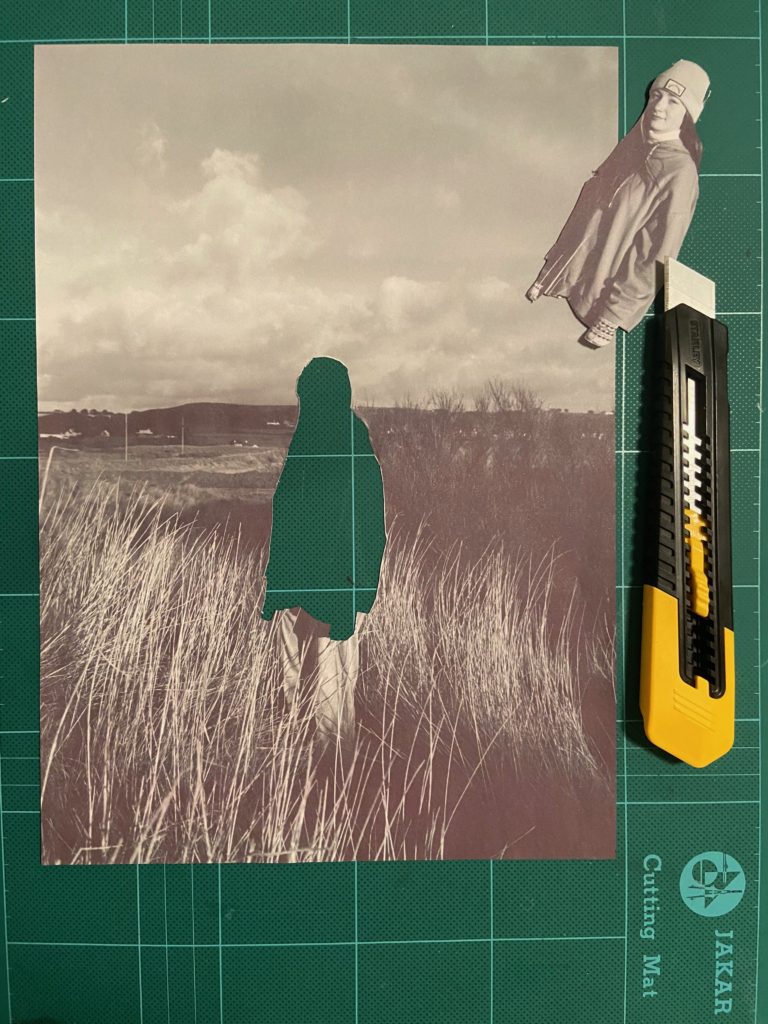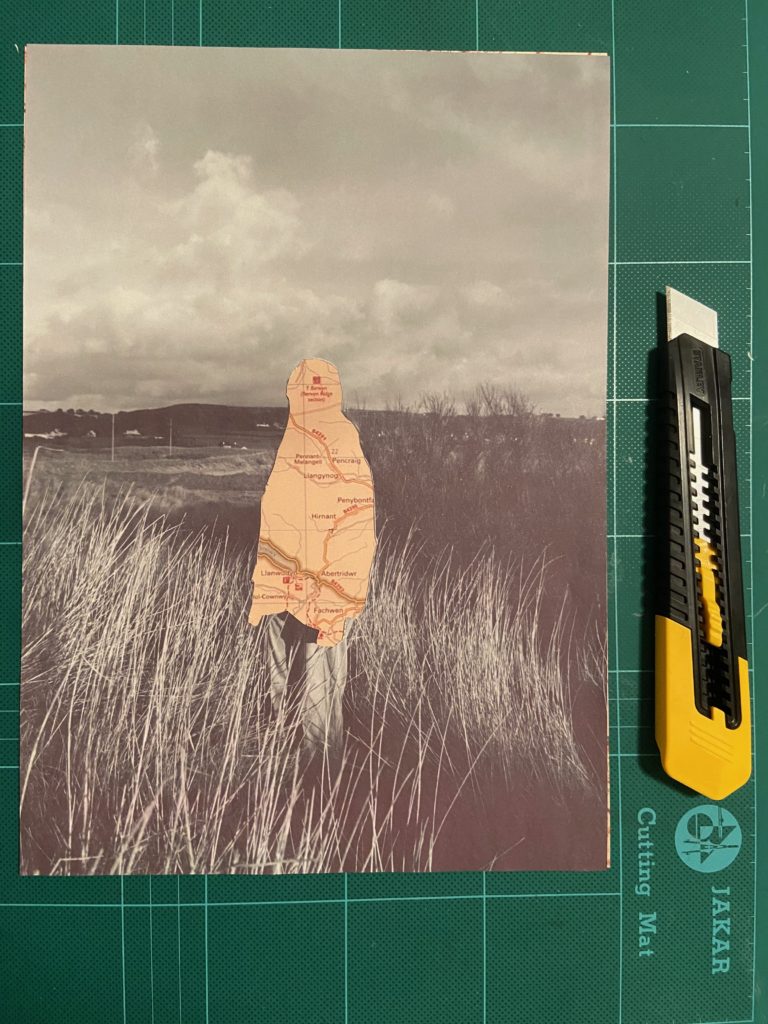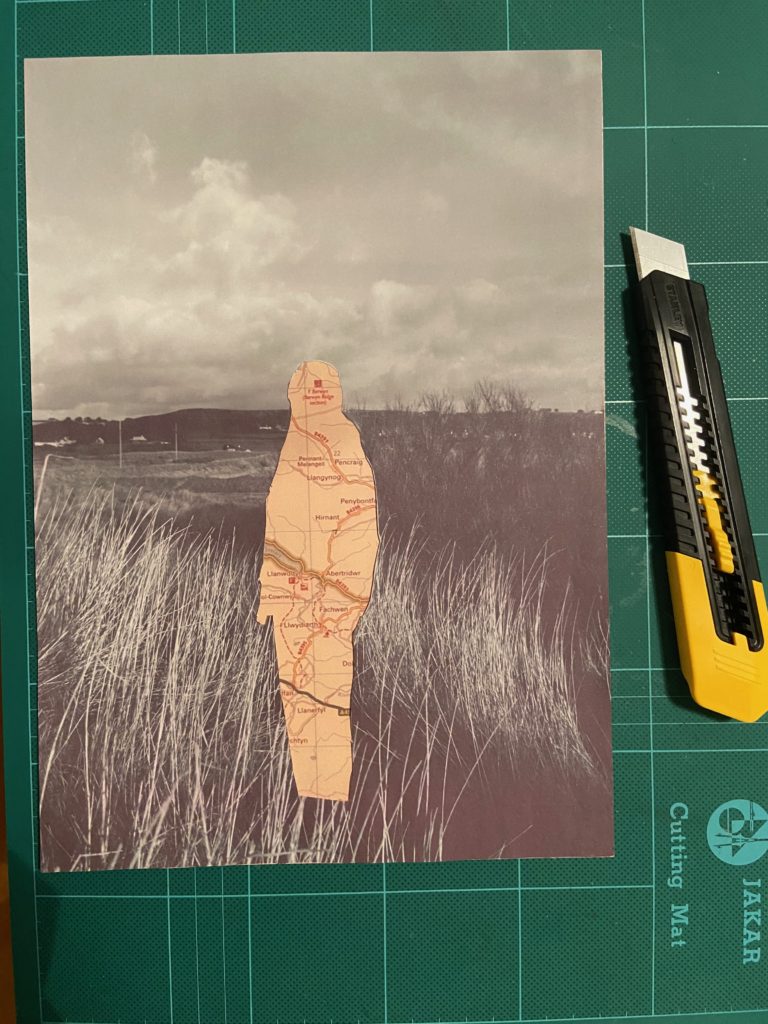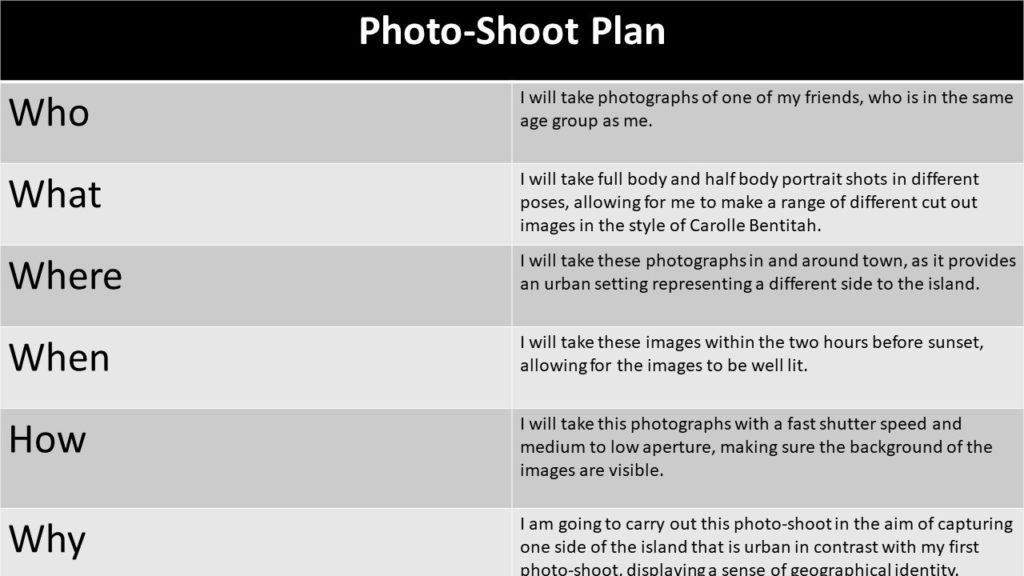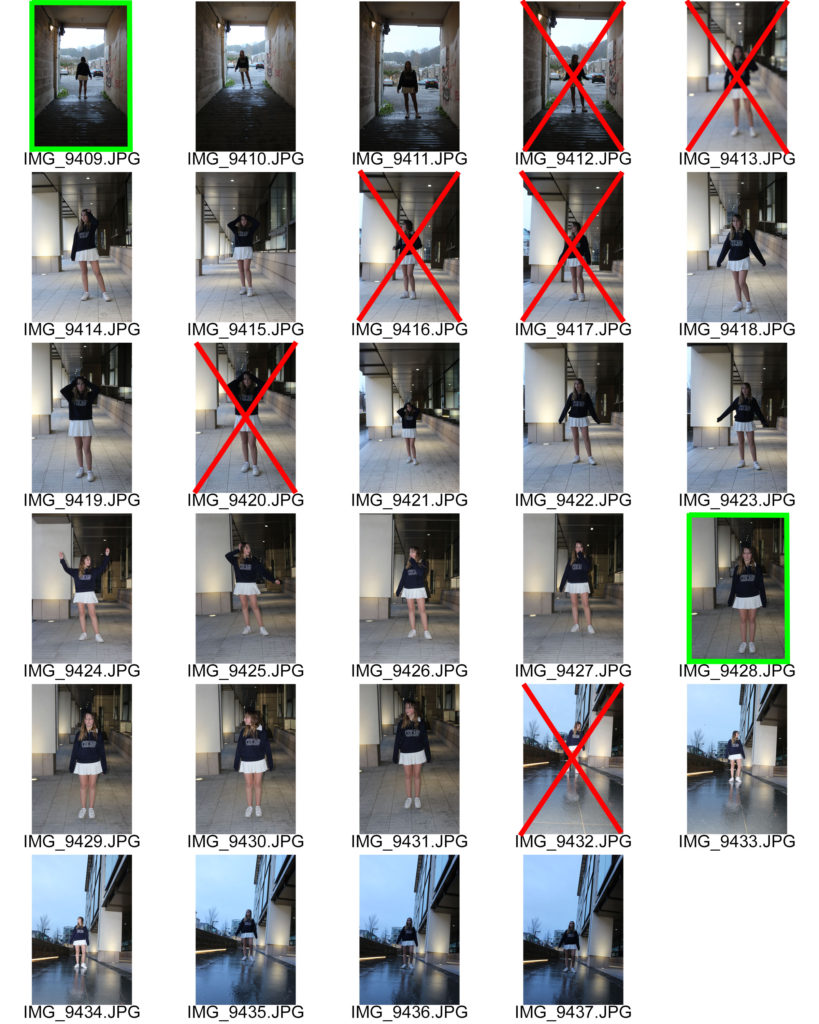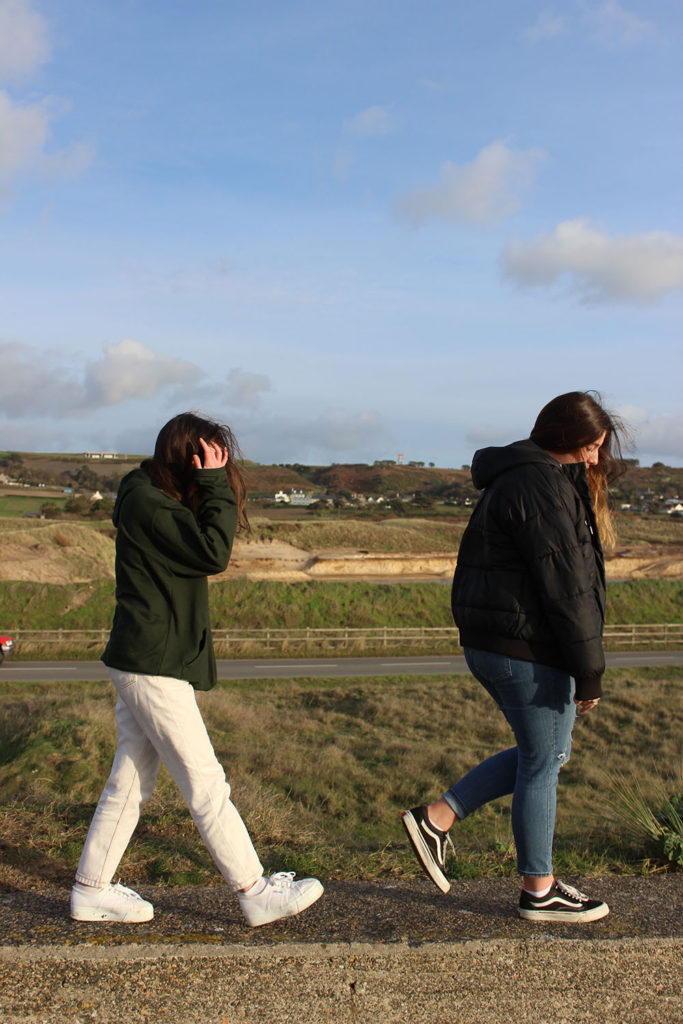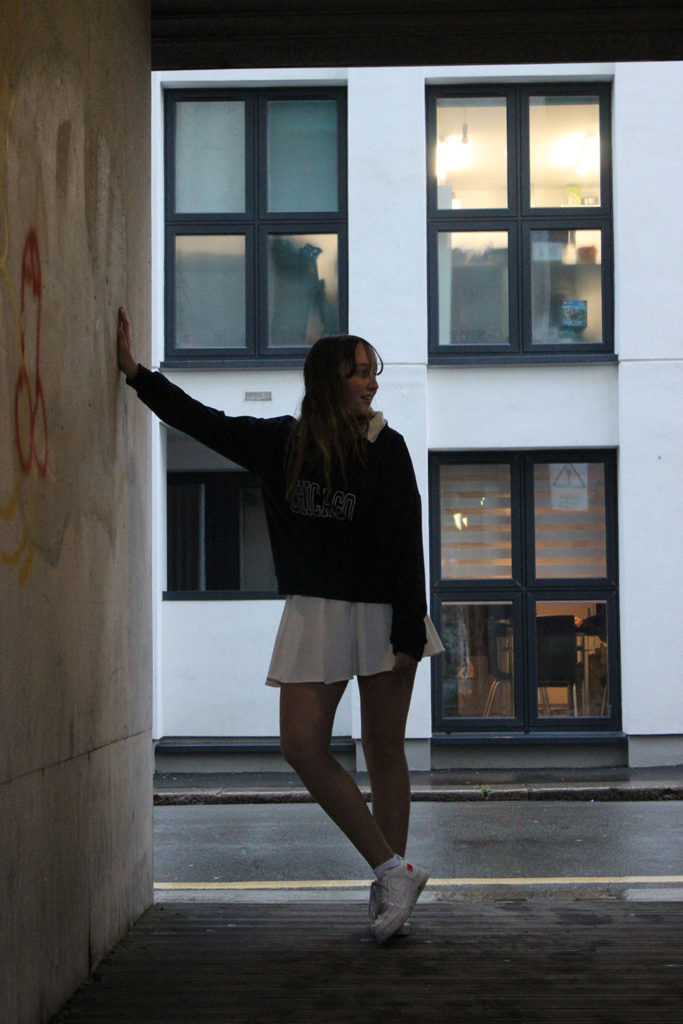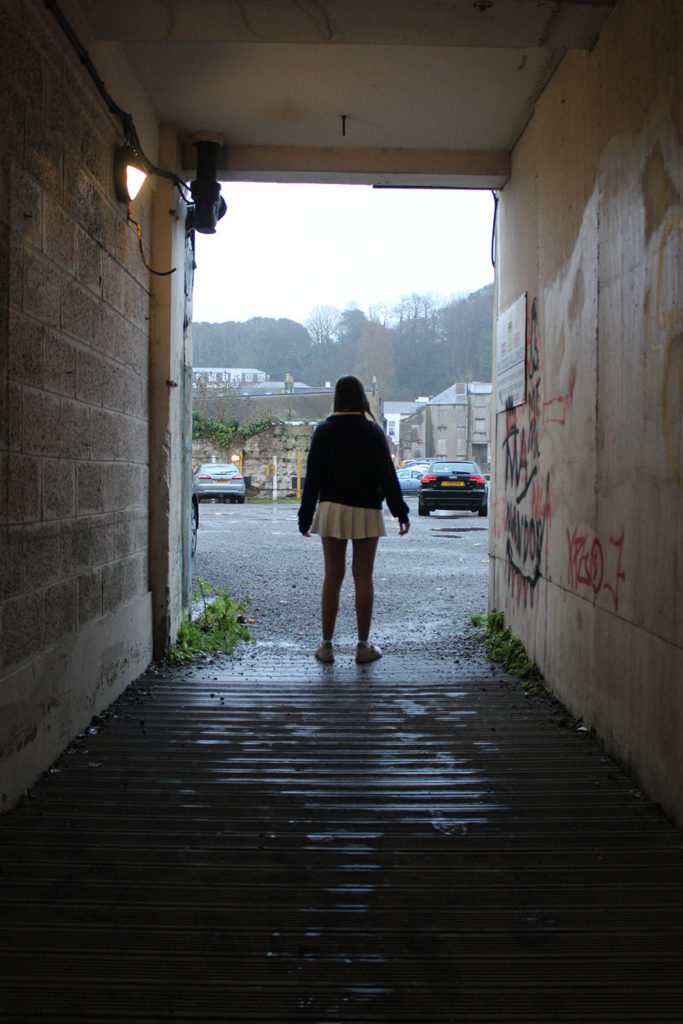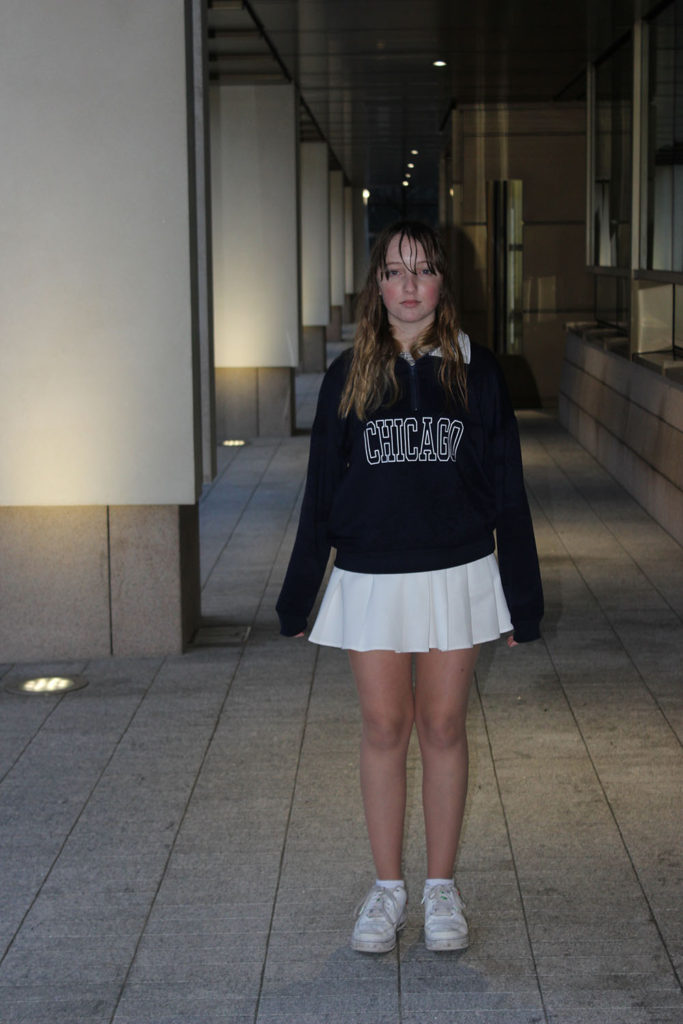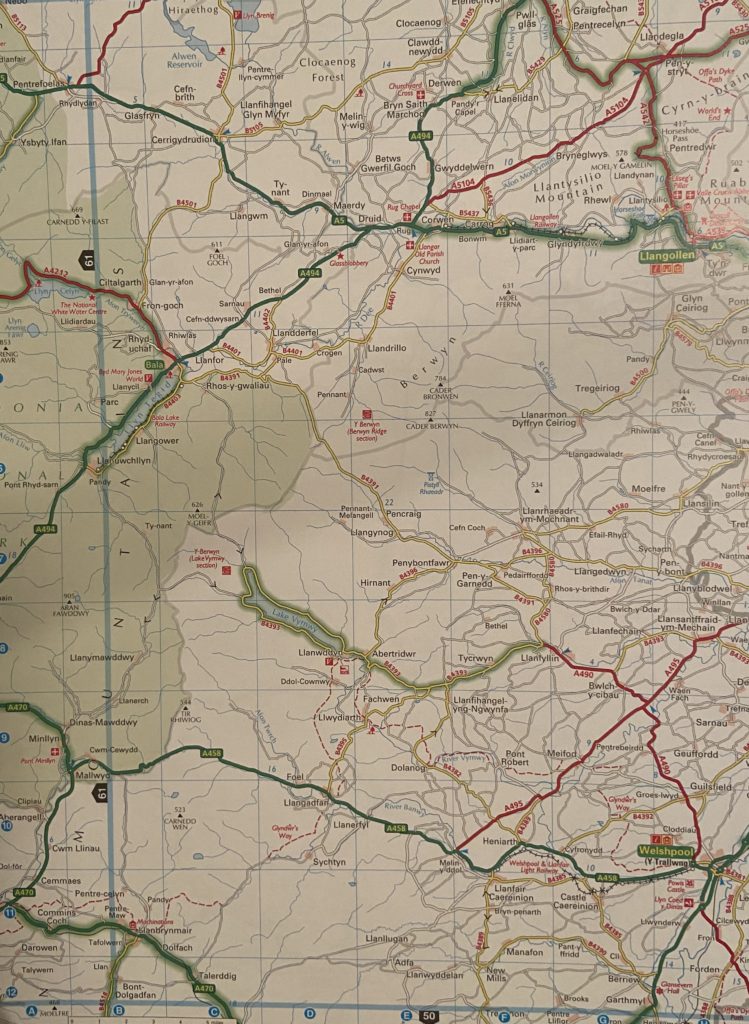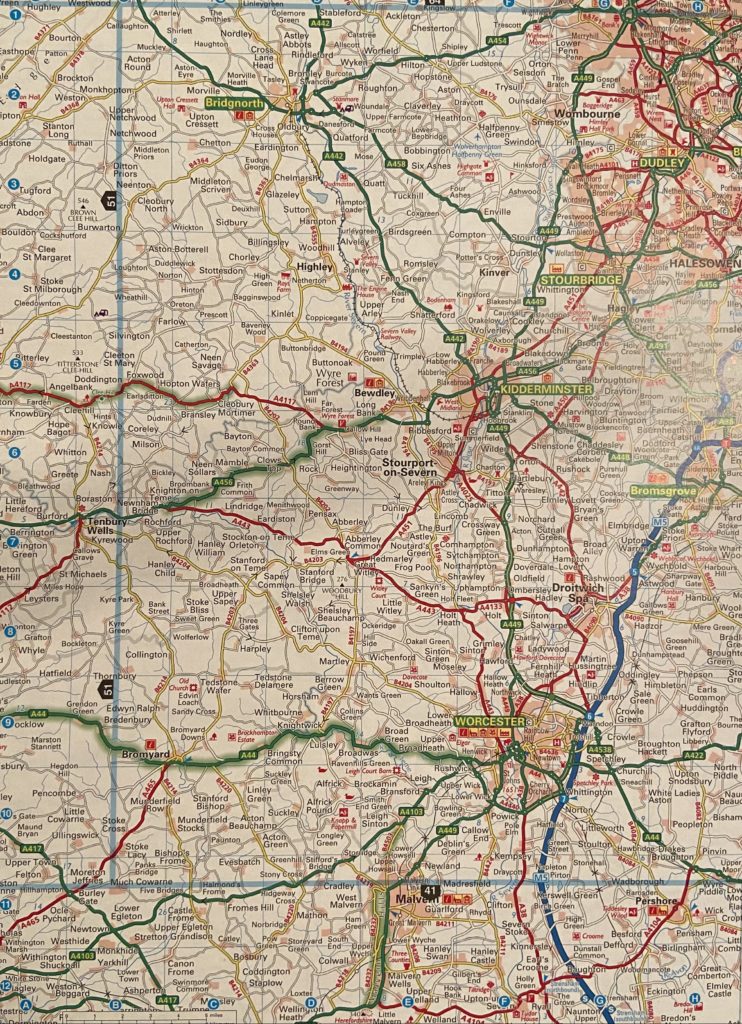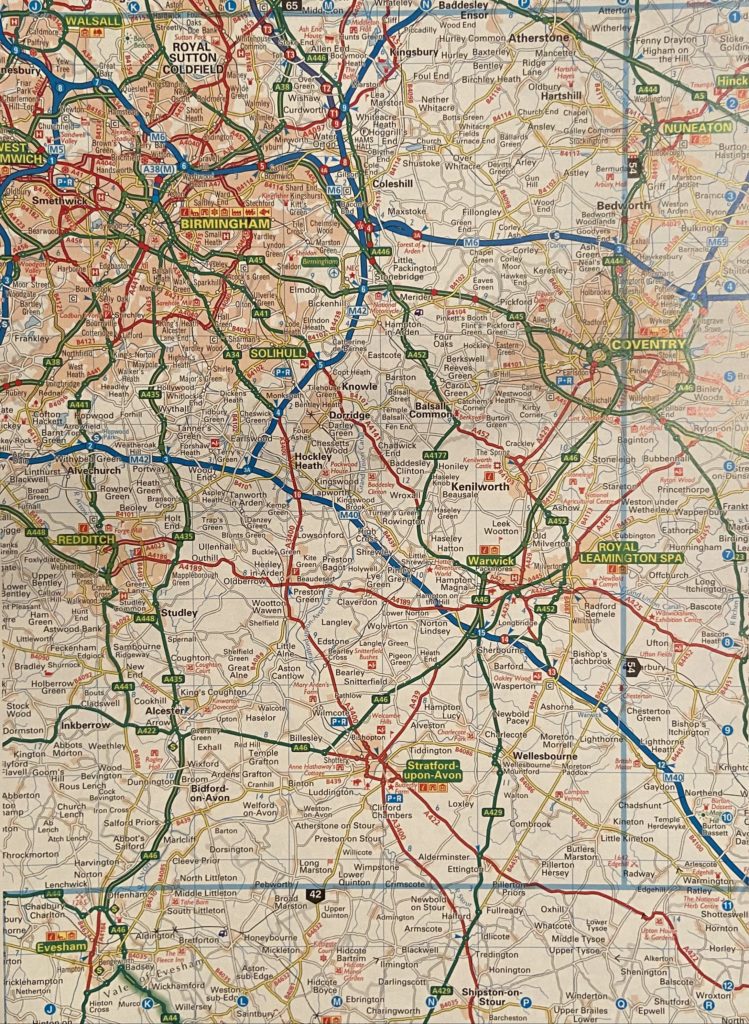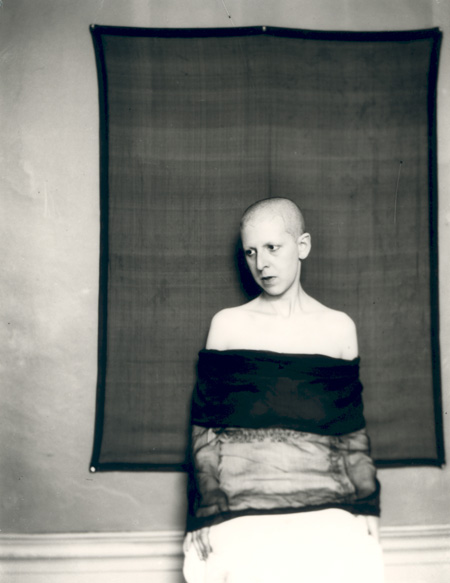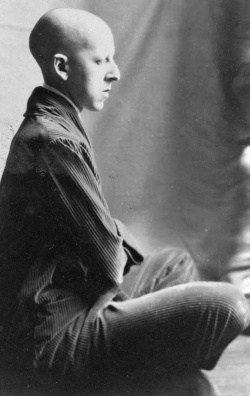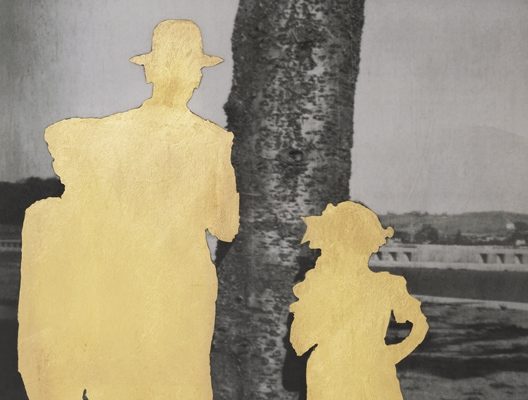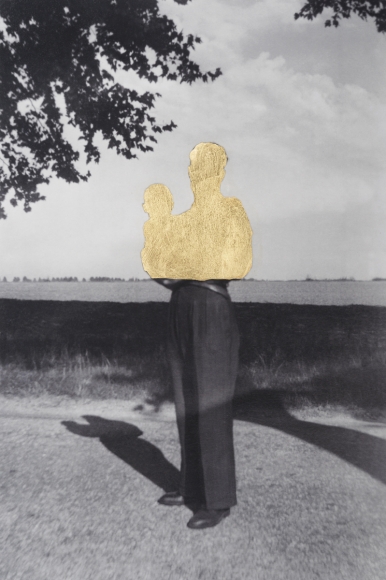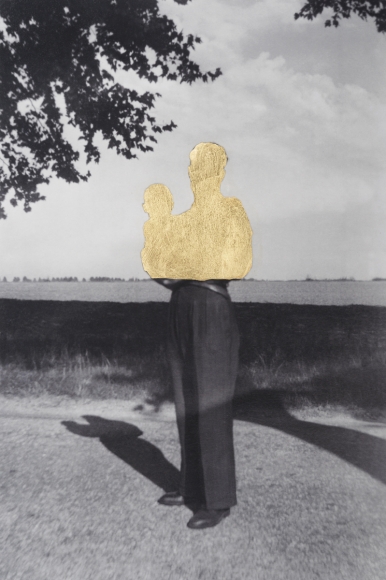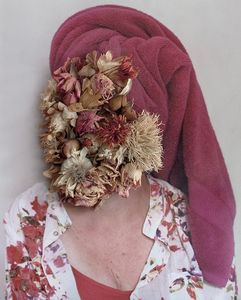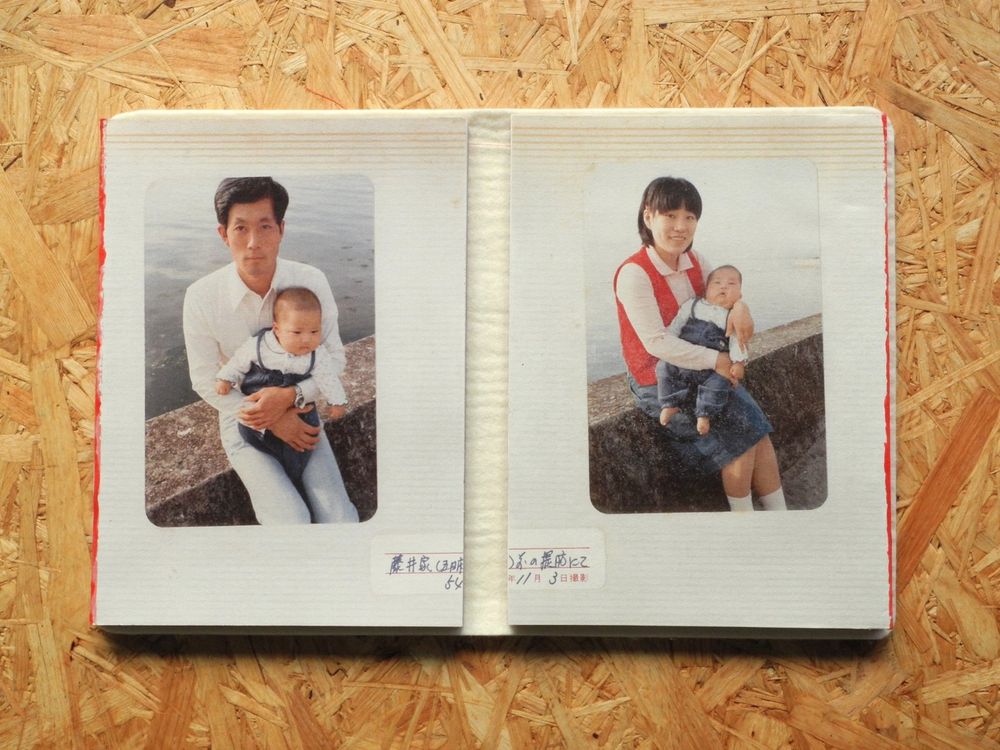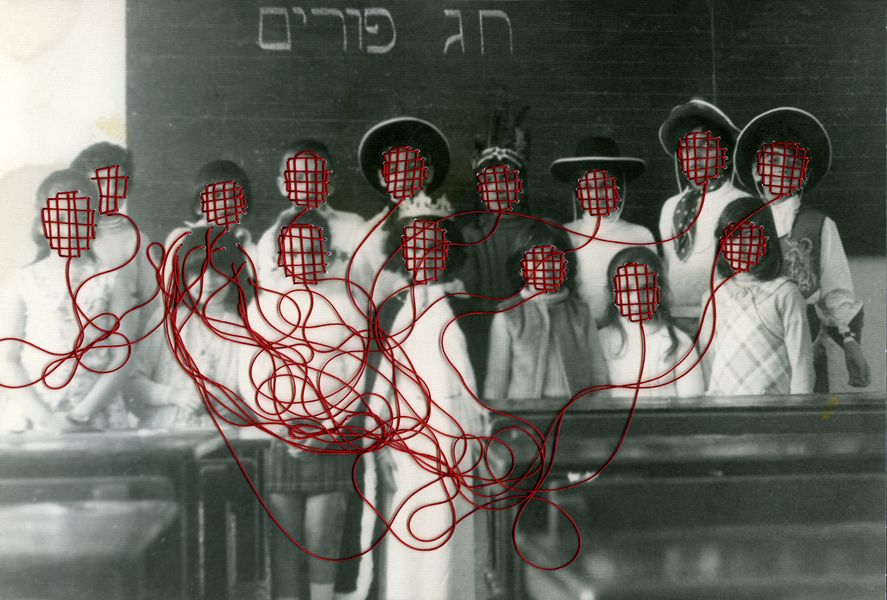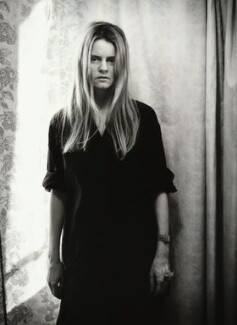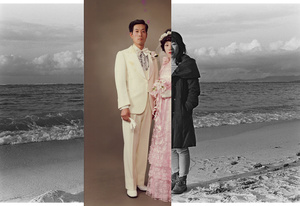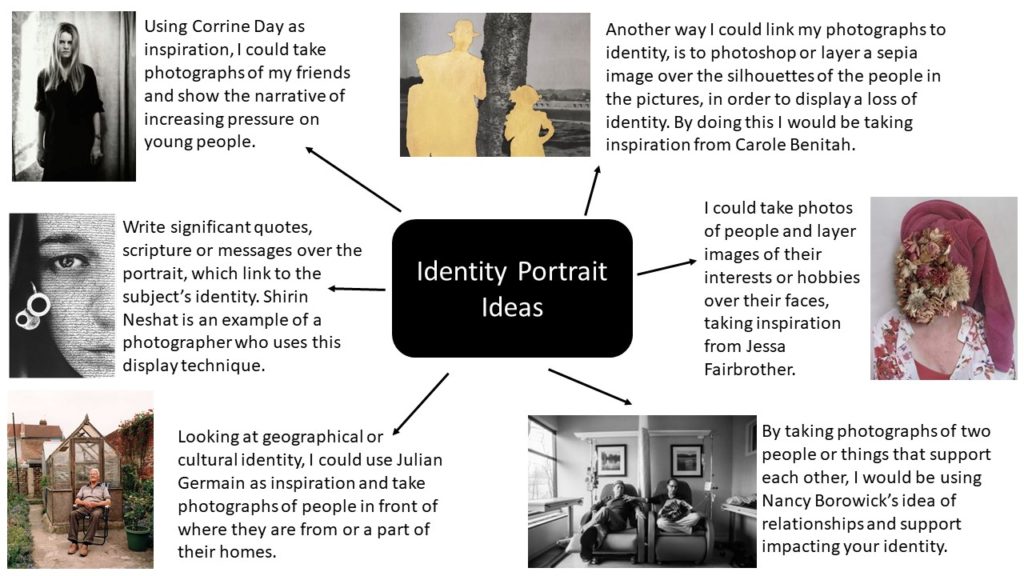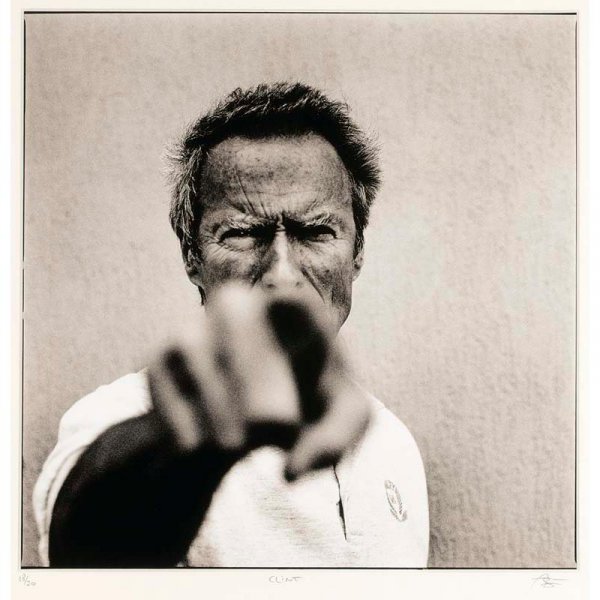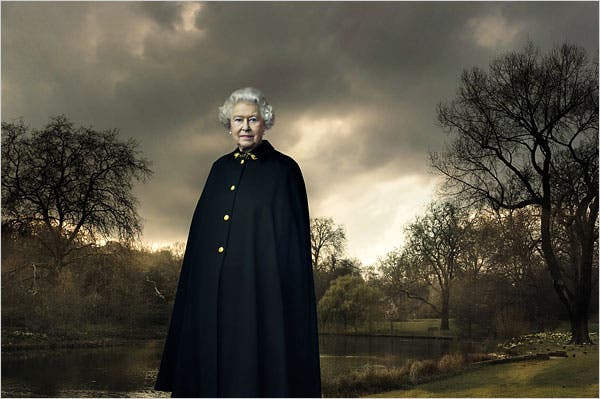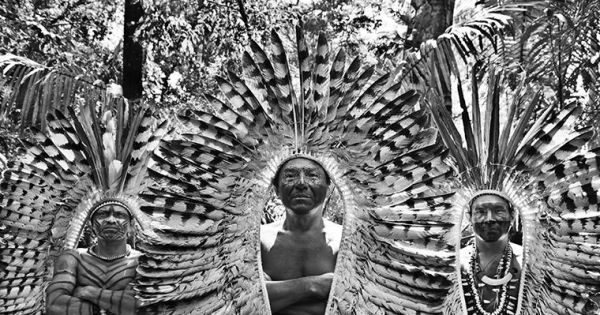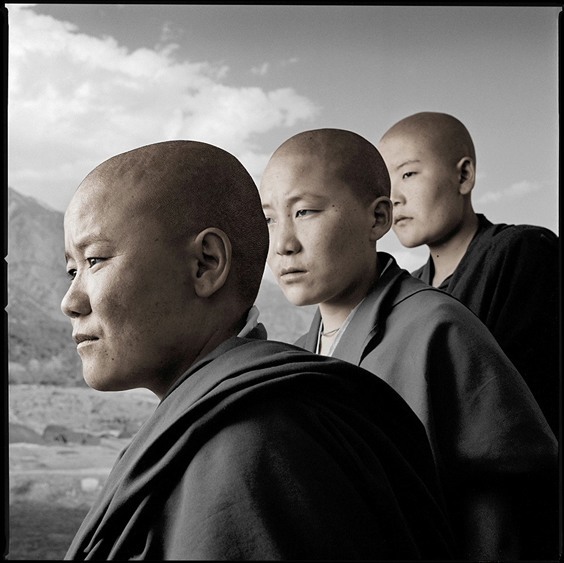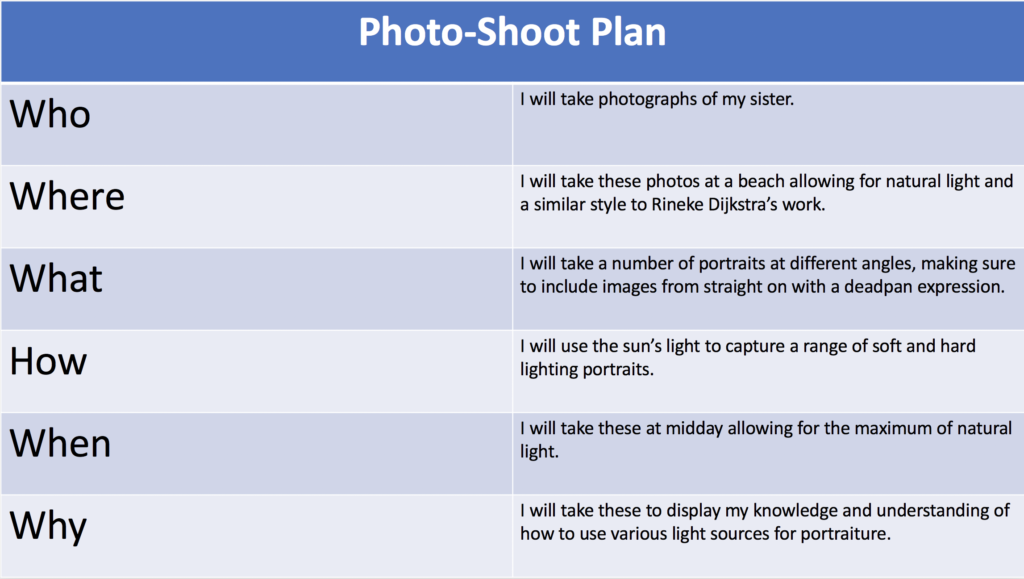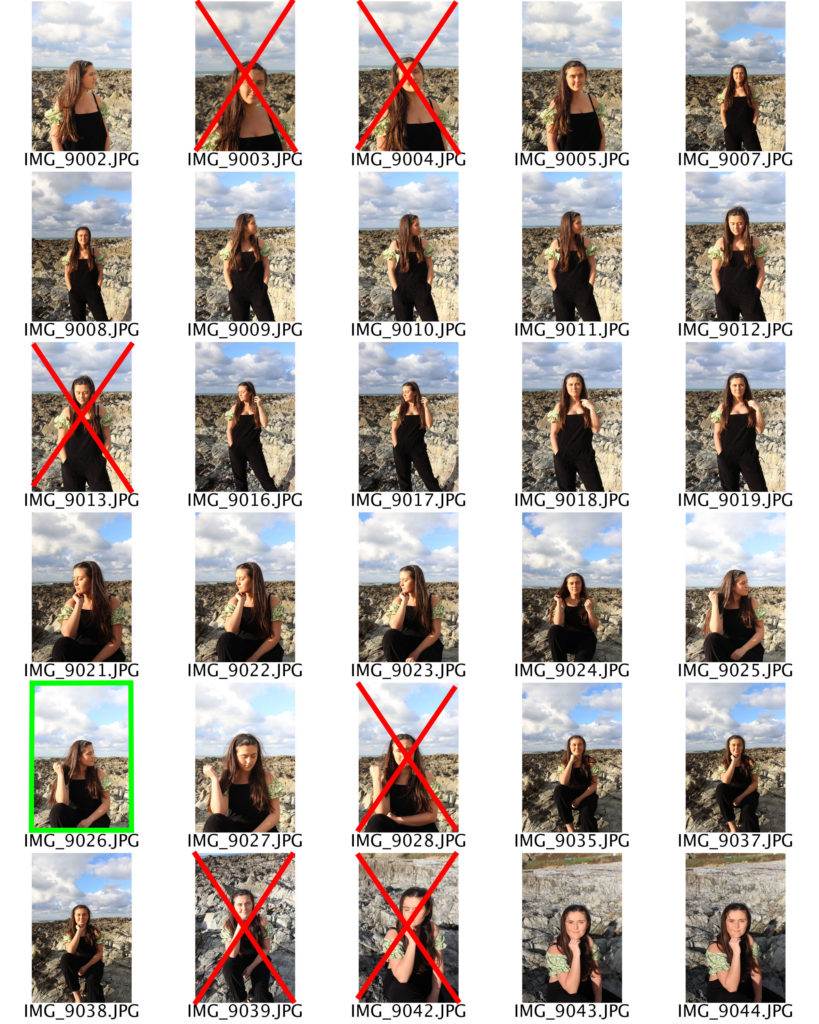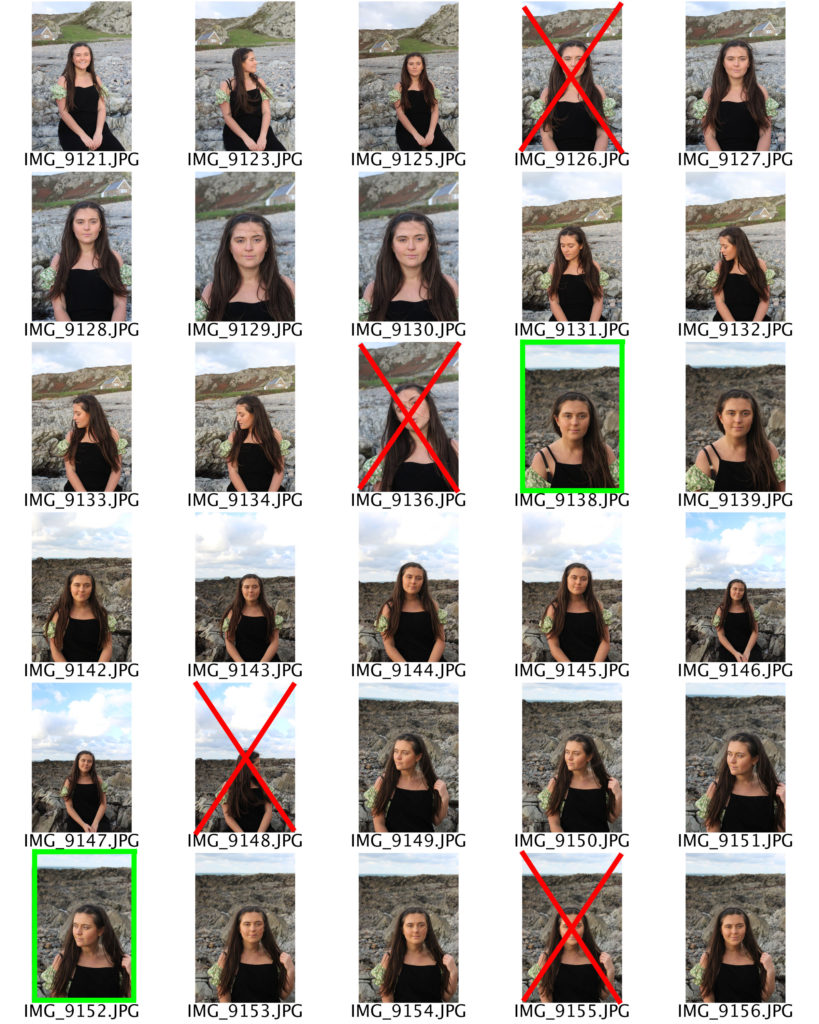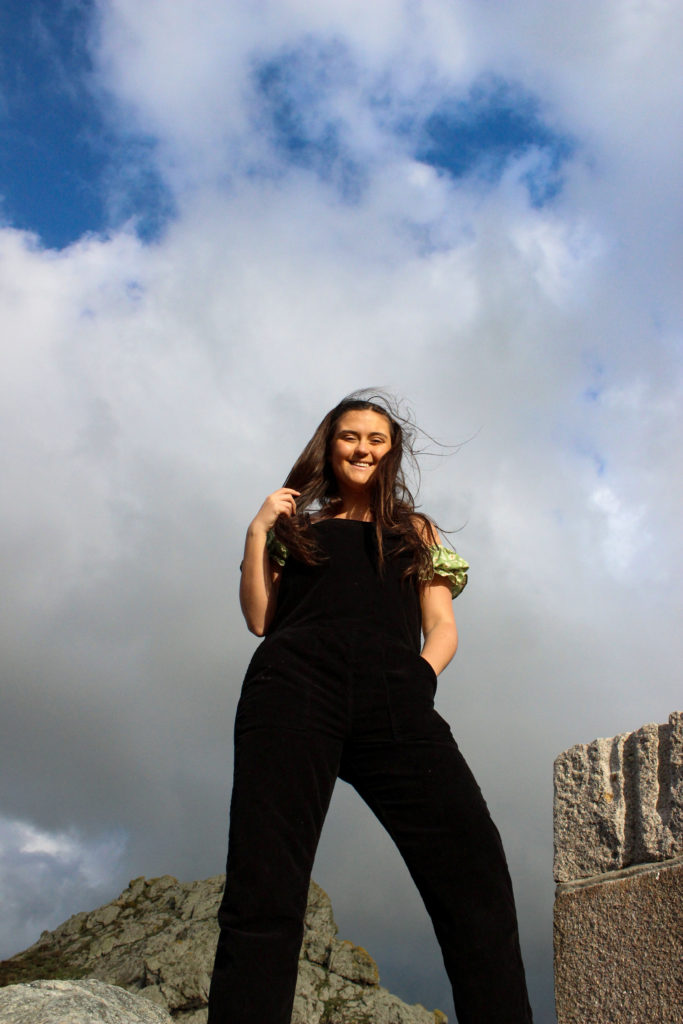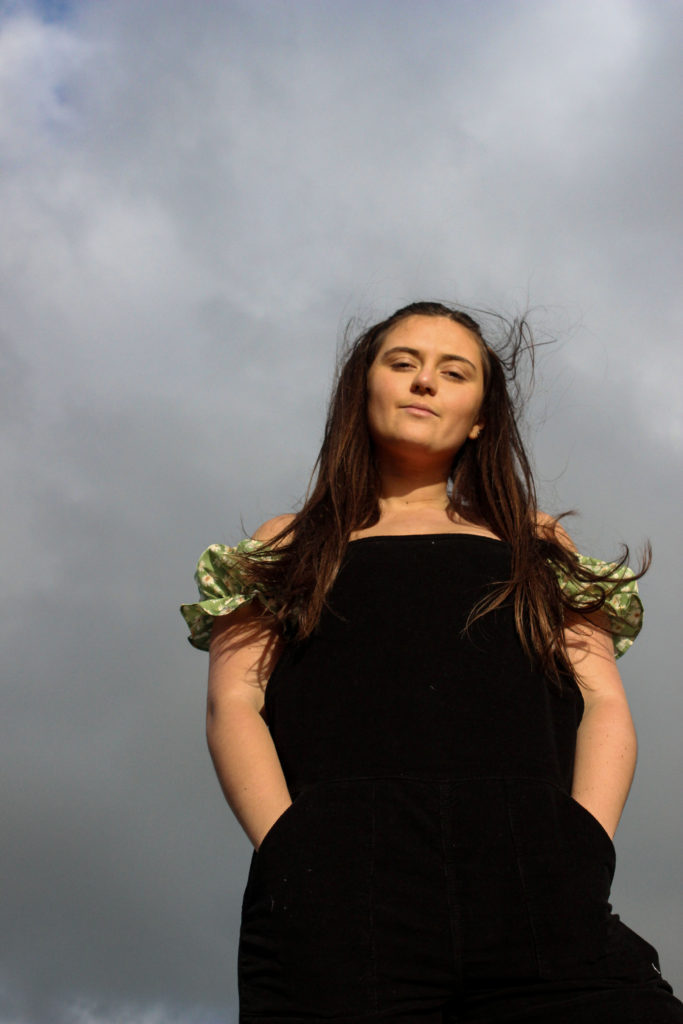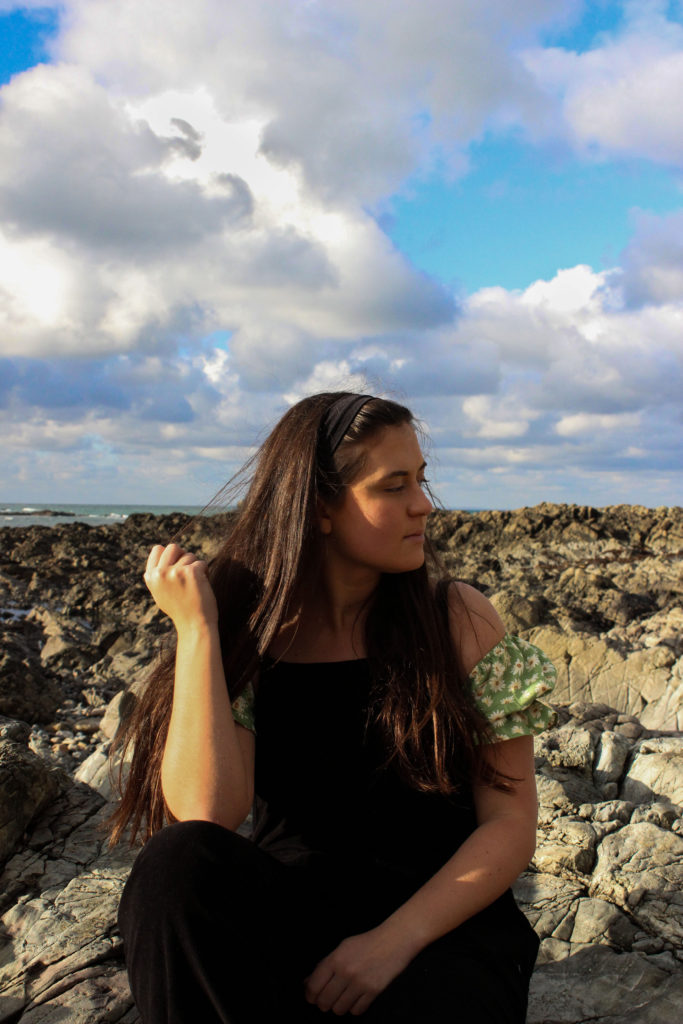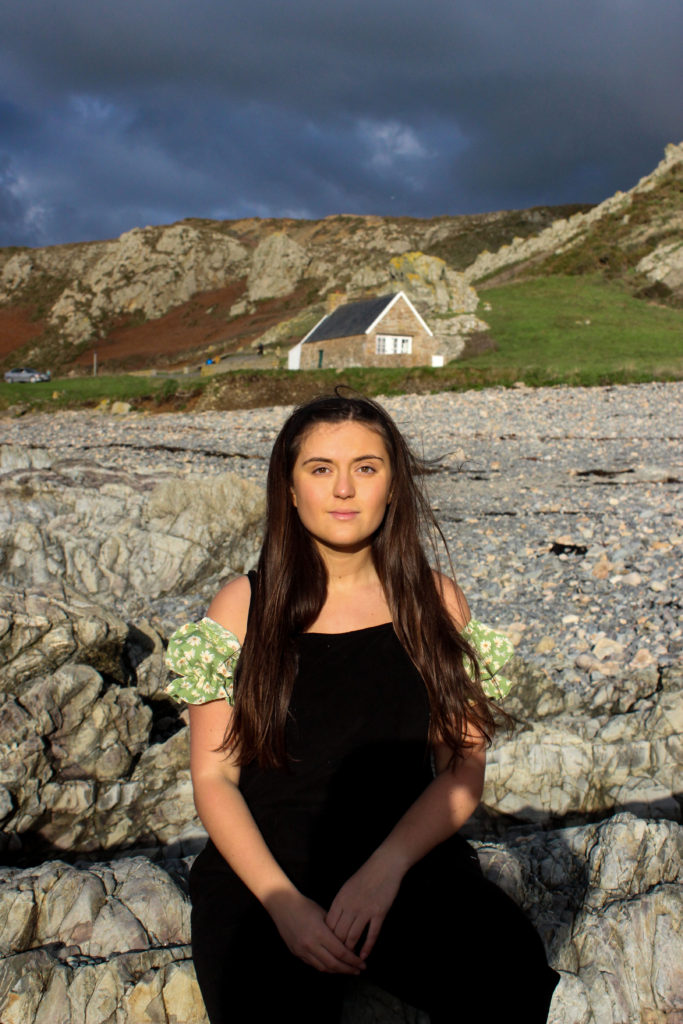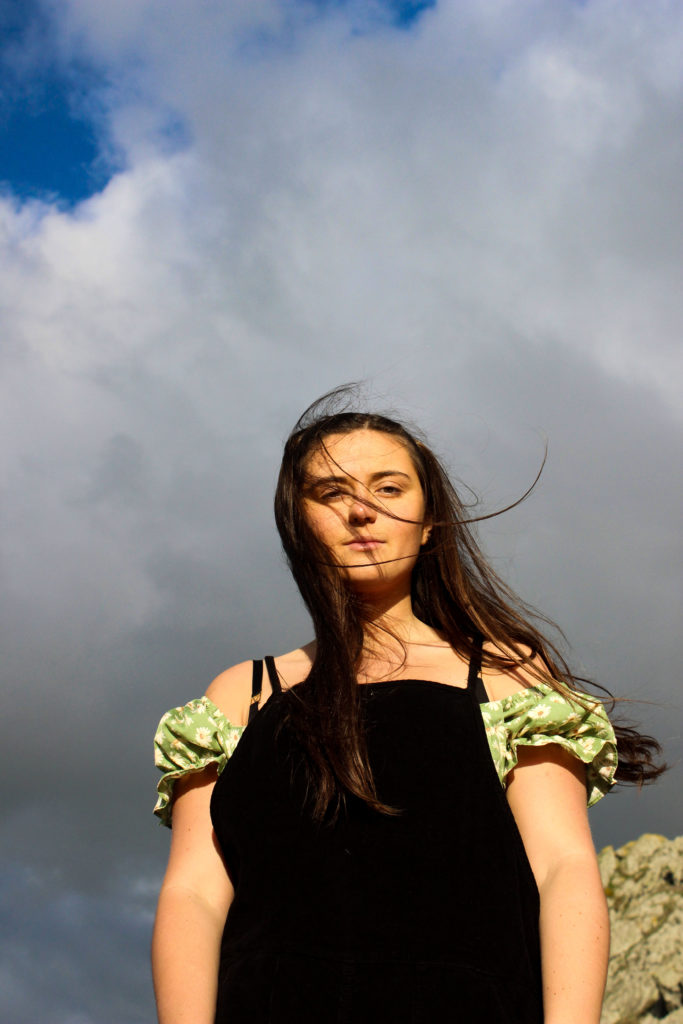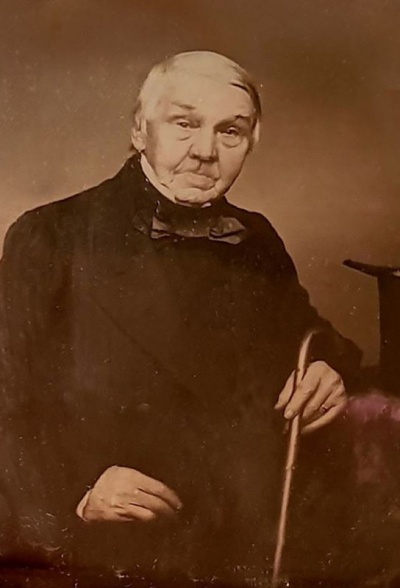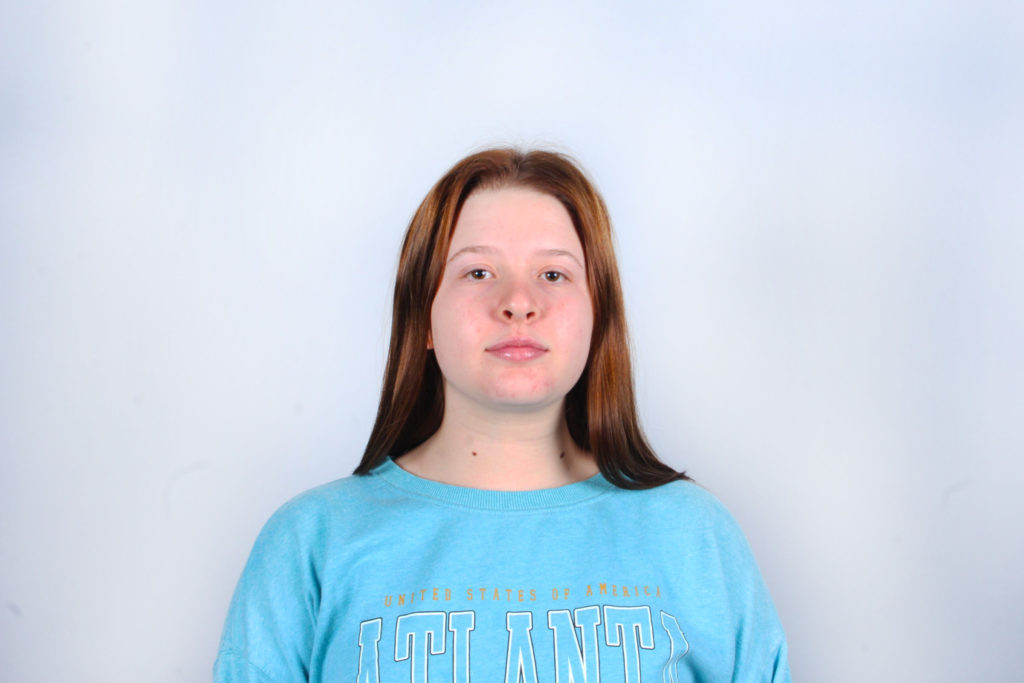Satoshi Fujiwara
Satoshi Fujiwara is a Japanese photographer, based in Berlin, known for his jarringly different perspective on portraits, displaying extreme close ups, in which the entire face was confined within the frame, and digital manipulation. Fujiwara first developed his interest for photography through his career as a graphic designer and planner in an advertising company. This was due to a fascination with the way in which visual information was consumed and the impact it had on society. Furthermore, his exhibitions continued this commentary on society by presenting his work in a way which matched his innovative style of photography. This was done by printing his images onto PVC sheets and attaching them to the walls with various materials such as packaging tape and metal bars, causing the images to fold and slump around the gallery space, leaving the meaning of his presentation up to the interpretation of the viewers.
Analysis

This colour image taken by Satoshi Fujiwara displays an extreme close up head-shot of a woman, which reveals the varying texture of her skin which appears coarse and cracked in some places but smooth in others. Also, the image posses a warm tone due to the yellow and orange tones in her hair, skin and glasses, which take up the majority of the photograph. Here Fujiwara has framed the image in a way which the face is confined in the frame, leaving very little empty space which can be seen on the right of the photograph. Another way that this jarring perspective makes for a complex composition is the defined wrinkles that run through the subjects face, creating leading lines across the image that draw your from the bottom of the composition upwards.
From a technical point of view, it can be said that the lighting used to take this photograph is hard one-point lighting, due to the fact that the background of the image is completely black, and the wrinkles in the face are intensified by dark, contrasting shadows. In addition, here Fujiwara seems to be using a large aperture, as again the small amount of background that can be seen, is plain and shows no important features that would add to the composition. As this photograph was taken in what looks like a dark setting, the ISO used for this image must be high, allowing for the camera to take in as much light as possible, to make the portrait visible. Looking at the definition in this photograph, Fujiwara most likely used a fast shutter-speed, due to the fact the woman also seems to be in motion, making it a more difficult task to produce such a high quality photograph.
Photo-Shoot
Plan
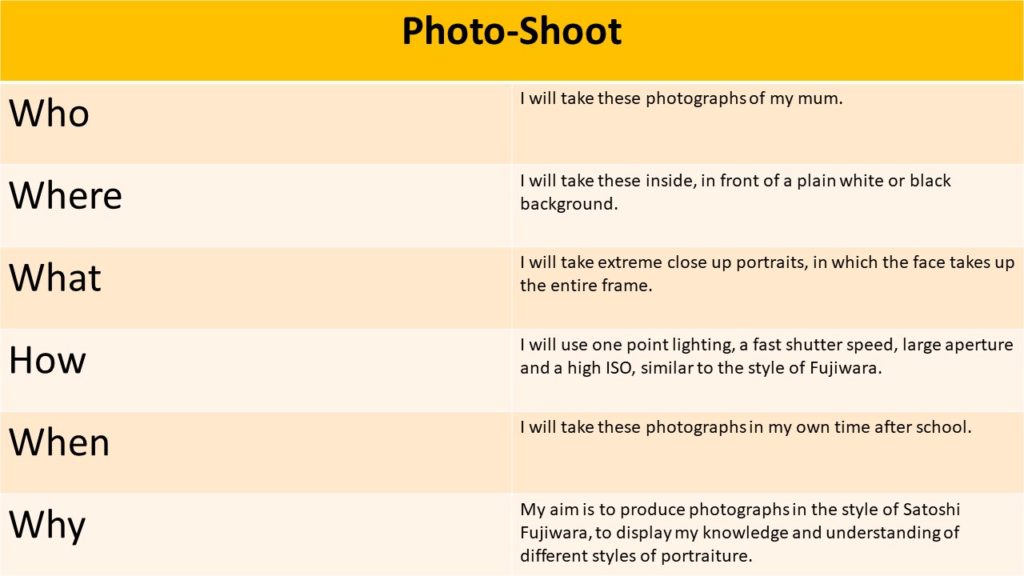
Contact Sheets
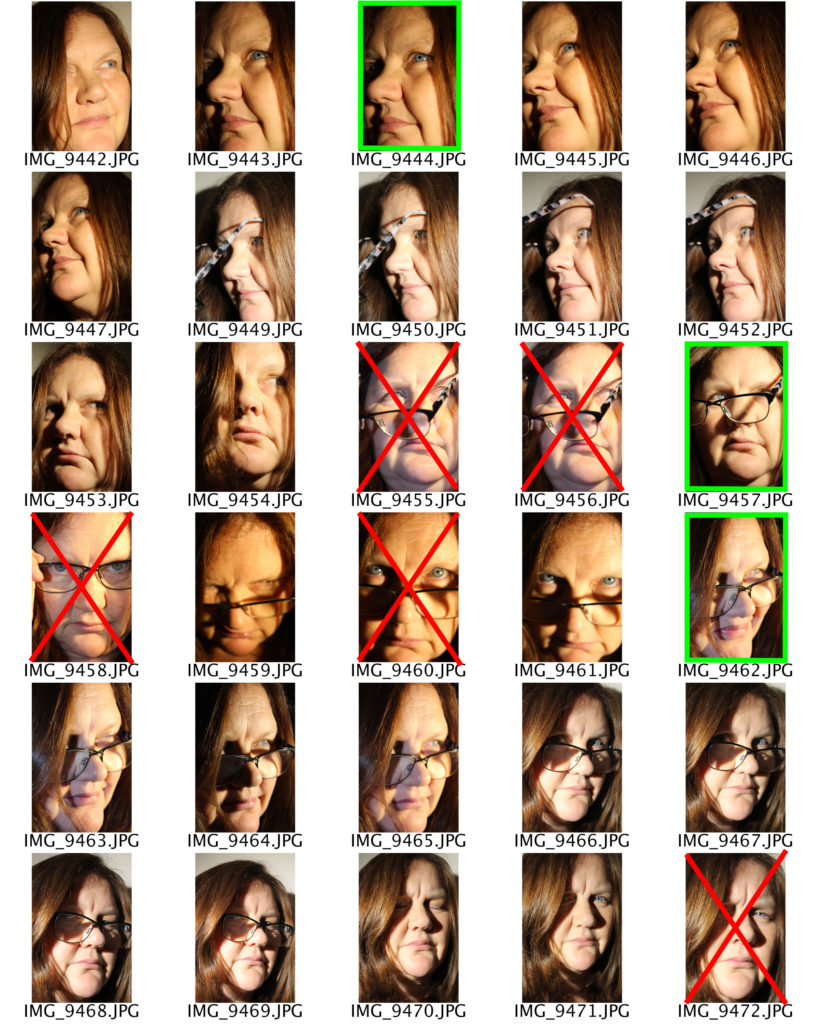

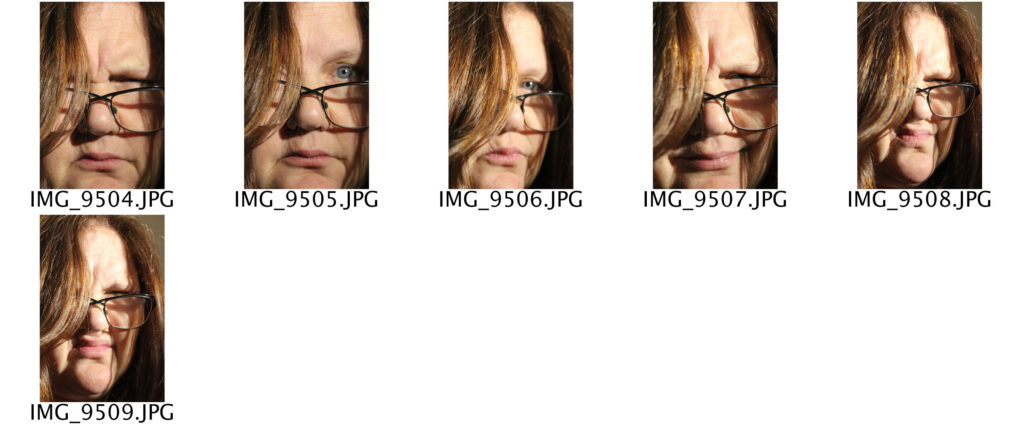
Here I have highlighted the photographs I believe are of the best quality and link to Satoshi Fujiwara’s work, in green, which I will later edit in photoshop. In red, I have crossed out the images that I will not edit, due to the fact that they are either over exposed or unfocused.
Edited Images
In order to make my photographs resemble the work of Fujiwara, I firstly increased the contrast of each photograph and slightly decreased the exposure, allowing for a sharper image . After I increased the shadows replicating the dark backgrounds in Fujiwara’s images. I also used the dodge and burn tool to intensify these highlights and shadows.
Final Image
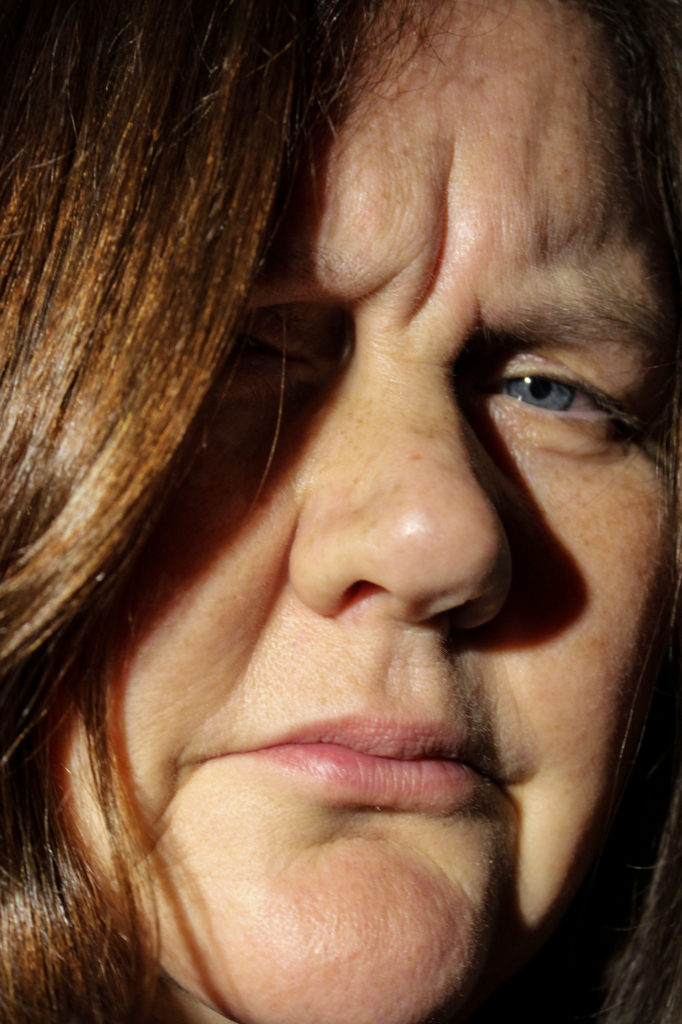
I believe that this edited image is my best as it best displays similarities to Satoshi Fujiwara’s unique style of extreme close up photography. This is due to the dark background that is just about visible around the edges of the image, and the warm tone of the portrait. I also aimed to capture a dissaproving facial expression within this photograph, which can also be seen in some of Fujiwara’s work that often exhibits images that appear to be taken of guard.

